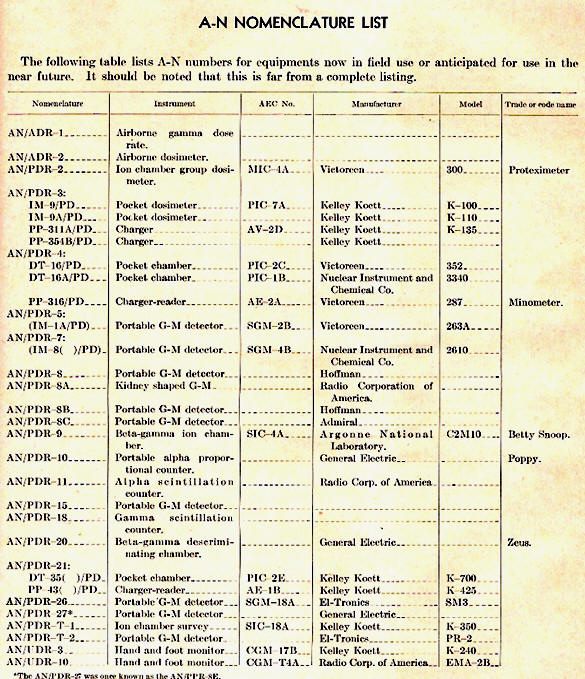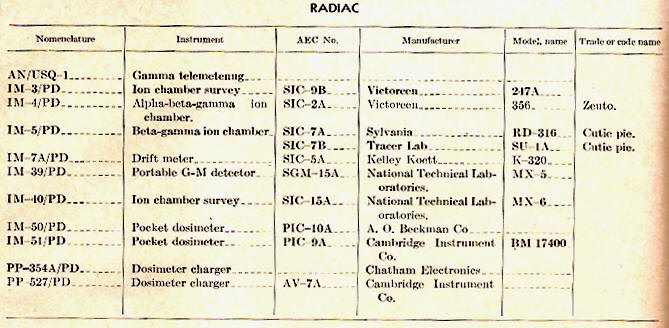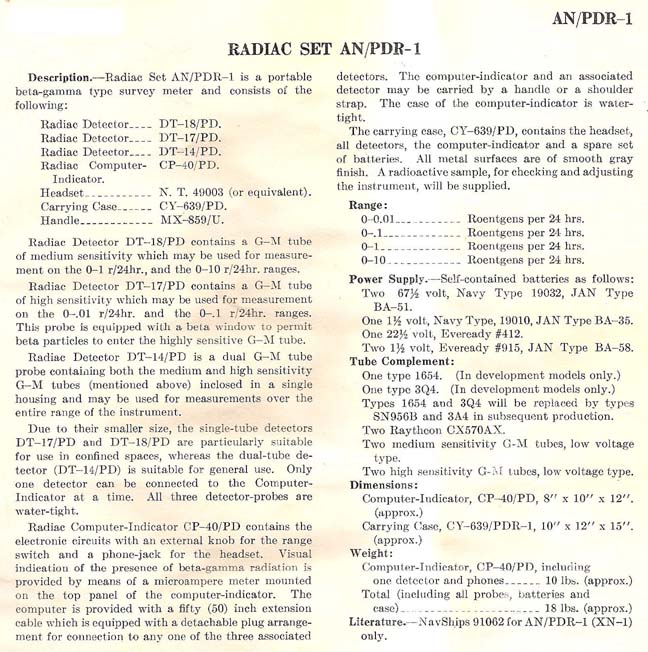
U.S. Department of the Navy - Bureau of Ships
Because of the need for specialized alpha measuring equipment as a result of the Pacific area nuclear testing, the Bureau of Ships, Navy Department, known as BuShips, or later know as NavShips, in the mid-1940's started a program to develop specialized detectors. The ships used in the Pacific nuclear test often became contaminated and instruments were need to assess the condition. The instrumentation was designated as the RADIAC - Radio Activity Detection and Identification and Computation.
The Catalogue of Electronic Equipment, NavShips 900,116 was originally three volumes and published in 1946. The NavShips 900,116, was revised, as Supplement 5, in Oct. 1952 (which contains Supplement 1, Jan. 1948). It is an excellent source of information on early military electronics. The catalogue replaces the Catalogue of Radiac Equipment, NavShips 900,141, Jan. 1948 and the earlier SHIPS 275 from 1946.
During the 1940's and 1950's, due to secrecy requirements, many of the radiation detection instruments had letter/number designators or code words. These are used through the information presented. The instruments are designated by Army-Navy nomenclature (AN). The nomenclature is used when equipment is procured jointly by both services. The letters following indicated more detailed information. In this report they are designated as PDR (i.e. AN/PDR-3). The P designates Ground, Pack or Portable (horse or man), the D designates xxx and the R designated Receiving. The other nomenclature is IM PD (i.e. IM-3 PD).
In 1955, the Navy used six main categories of radiation instruments - high intensity survey meters (Hi-R survey), low intensity survey meters (Lo-R survey), Alpha survey meters, low dose pocket dosimeters (Lo-R dosimeter), high dose, non-self- indicating dosimeter (Hi-R dosimeter, non-indicating), and computer indicator.
The AN/PDR-1 (XN-1) is a portable beta-gamma survey meter. It contains several GM tubes for measuring various ranges. The AN/PDR-1 was used 1948 during Operation Sandstone. It was developed by Raytheon and Admiral. The DT018/PD was used for 0-1 R/24h and 0-10 R/24h. The DT-17/PD had a range of 0-0.01 R/24h and 0.1 R/24h. The DT-14/PD is dual GM probe containing both low and high sensitivity detectors. Only one detector can be attached at a time. The probes are water tight. The carrying case was 10" x 12" x 15" and weighed 10 lbs. with one detector and 18 lbs. with all probes.

need photo
AN/PDR-1 1948
The AN/PDR T-1 was an ionization chamber survey meter developed by Kelly-Koett Mfg. Co. in 1948. The Model K-350 has scale ranges of 0-5, 0-50, 0-500, 0-5000, and 0-50,000. The chamber was 54 cubic inches and filled with air at atmospheric pressure. It measured 10" x 6" x 7.5" and weighed 10 lbs. The case was welded steel with baked olive drab enamel.
The AN/PDR T-1 was the first ionization chamber gamma survey meter built to military specifications. The unit is fully ruggedized and can operated in any weather conditions of temperature and humidity. It will operate at an aircraft altitude of 36,000 feet.

AN/PDR T-1 (Kelly-Koett, Model K-350) 1948

AN/PDR T-1 1950
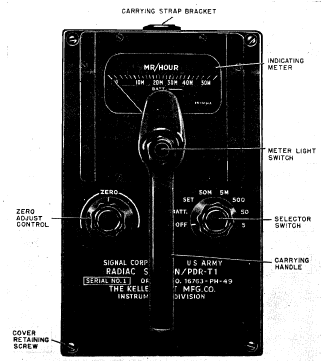
AN/PDR-T1 1950
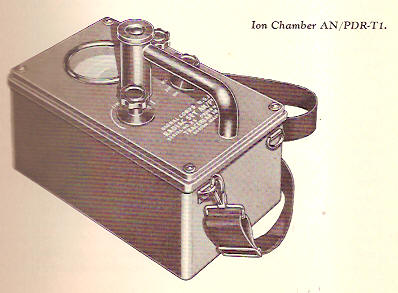
AN/PDR-T1 Ion Chamber 1953
The AN/PDR-39 (T1B) radiac was an ionization chamber for detection of hard x-rays (above 80 keV) or gammas. It had ranges of 5, 50, 500, 5000 and 50,000 mR/h. It has an embedded Sr-90 source and a source check switch. It is enclosed in a thick metal case. The unit was designed to train personnel in radioactive surveying and monitoring techniques. It is the third in the series of training aids. The unit measured 10-1/2 in x 6-3/16 in x 5-1/2 in.
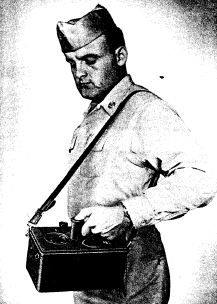
AN/PDR-T1B 1950

AN/PDR-39 (T1B) 1950's
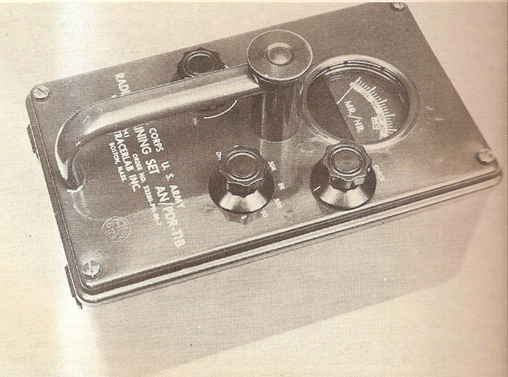
AN/PDR T1B Training Set, Tracerlab, July 1954
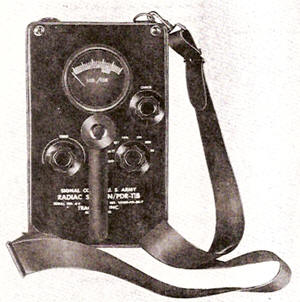
AN/PDR-T1B 1959
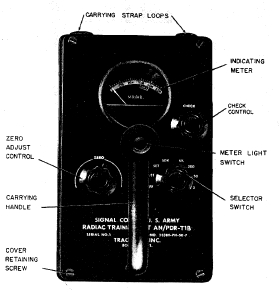
AN/PDR-T1B 1960
The AN/PDR T-2 was manufactured by El-Tronics as Model PR-2. It was a low range beta-gamma survey meter with ranges of 0.5, 5 and 50 mR/h. The probe had 8 openings of 1/2" x 1-7/16". The probe cable was 36 inches. The unit weighed 9.5 lbs. and measured 10" x 6" x 7". The dial was illuminated for night operations. It was developed as an interim training instrument (as per the T designation for training) and evolved from results at the Operation Sandstone evaluations.
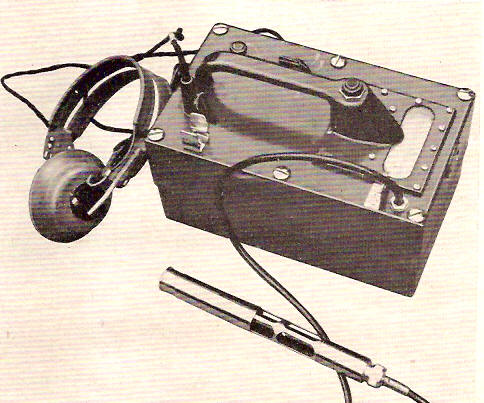
AN/PDR T-2 (El Tronics, Model PR-2) 1948
The Proteximeter, AN/PDR-2, was developed by Victoreen Instrument Company in 1948. It was designated Model 300 and is an integrating gamma detector. The unit had a full scale reading of 200 mR. The chamber was 1/16" polyethylene measuring 3" x 3" cylinder on top of the unit. It was cast aluminum with a grey crackle finish. It measured 9" x 5" x 4-1/2" and weighed 5 lbs. The unit is recognizable by the "dome shaped" ionization chamber on the upper part of the unit. The unit had a gravity switch in the top section which would discharge when inverted. The Model 392 had a high range of 0-50 R and the scale was colored magenta. It is notable by the magenta colored cylindrical ionization chamber cover on the top part of the unit. It was upgraded to replace the gravity switch to prevent accidental discharge. The unit weighed 5-1/2 lbs. and measured 9" x 4" x 4-1/2".
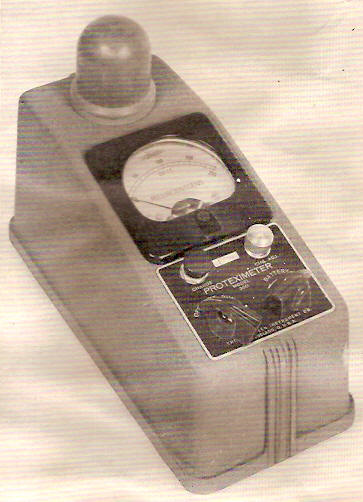
AN/PDR-2 (Victoreen Instrument Company, Model 300) 1948
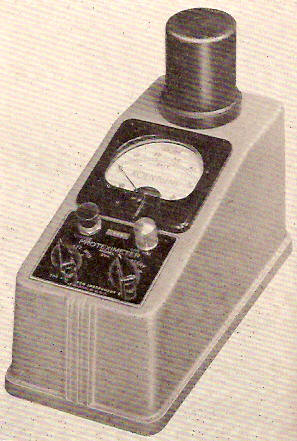
AN/PDR-2 (Victoreen Instrument Company, Model 392) 1948
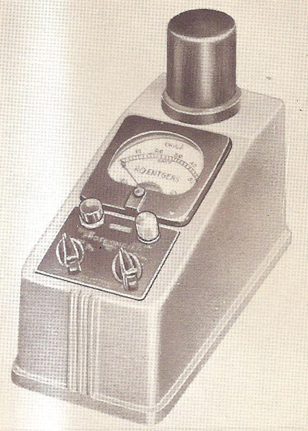
AN/PDR-2 (Victoreen Instrument Company, Model 392) 1948
The AN/PDR-3 was manufactured by Landsverk. It is composed of two units - the radiacmeter (IM-9/PD) and the charger (PP-311/PD). It is used to measure gamma radiation. The radiacmeter is the Landsverk Model L-200 and the charger is the Landsverk Model 300 Dosimeter Charger. The dosimeter is small and compact about the size of a fountain pen. It has a clip to wear in a coat pocket. One end has an optical eyepiece and the other has a optical window. The user can look through the eyepiece and see the indicated reading on the internal scale. The unit consist of an air ionization chamber with an electrometer to measure the charge loss. The unit measures in mR. The dosimeter is 4-13/16" x 9/16" and the charger is 6" x 3-1/2" x 4-1/2". The unit weighs 3 lbs.
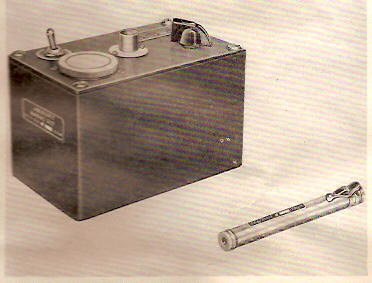
AN/PDR-3 (Landsverk Model 200 and 300) 1948
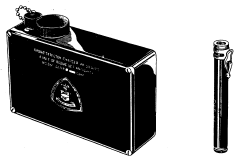
AN/PDR-3A 1960
The AN/PDR-4 was developed by Victoreen Instrument Company as the Pocket Chamber. It is comprised of the charging unit and the dosimeter. The dosimeter has a range to 0.2 R. The air ionization chamber in the dosimeter collects charge via the electrometer. It is the size of a fountain pen to be worn in a shirt pocket.
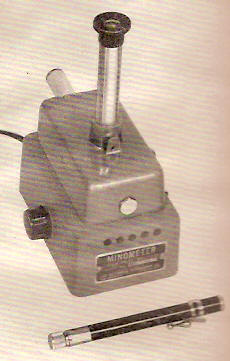
AN/PDR-4 (Victoreen Instrument Company, Pocket Chamber) 1948
Victoreen Instrument Company developed the Model 263 which was designated AN/PDR-5. The unit measures beta and gamma with an external probe. The range was 0-0.2, 0-2 and 0-20 mR/h. The beta shield was 1/32" brass. The unit weighed 17 lbs. and measured 10-1/4" x 13-1/4" x 3-1/4". The case was sheet metal with a black crackle finish. It had a leather handgrip. It should be noted that the Model 263 was the original AN/PDR-5 and was similar to the Model 263A which is more refined. The Model 263B followed with further improvement and recently issued in 1948.
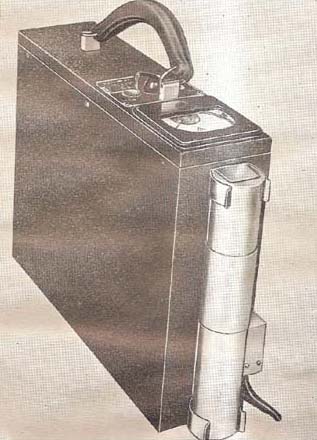
AN/PDR-5 (Victoreen Instrument Company, Model 263) 1948
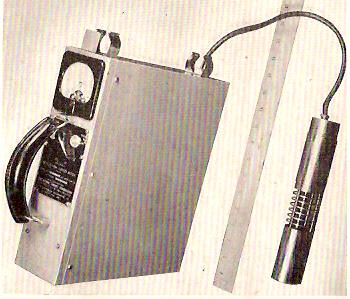
AN/PDR-5 (Victoreen Instrument Company, Model 263A) 1948
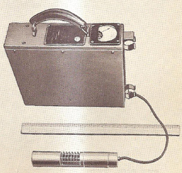
AN/PDR-5 (Victoreen Instrument Company, Model 263A) 1950
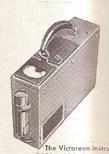
Victoreen Model 263B 1950
The Victoreen Instrument Company, Model X-263, was designated as AN/PDR-6. It was a beta-gamma GM survey meter. The bottom contains a aperture measuring 2-7/8" x 1-1/4" which can be exposed using a metal slide. The GM tube is located behind the aperture. When the metal slide is removed, a wire mesh screen draws in place to protect the thin wall GM tube. The case is made of aluminum with a gray crackle finish. The range was 1, 5 and 20 mR/h. The unit weighed 7 lbs. and measured 6-1/2" x 2-7/8" x 9". It was deemed obsolete in 1948 due to unsatisfactory performance.
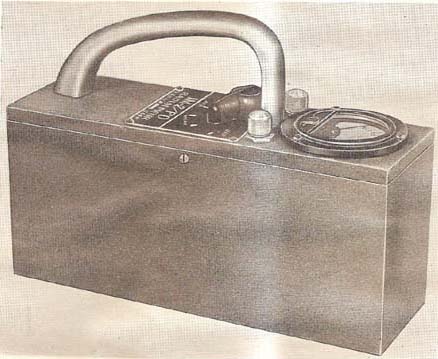
AN/PDR-6 (Victoreen Instrument Company, Model X-263) 1948

AN/PDR-6 (Victoreen Instrument Company, Model X-263) 1946
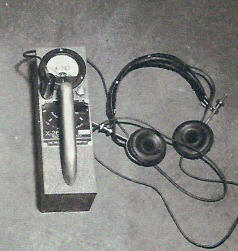
AN/PDR-6 (Victoreen Instrument Company, Model X-263) with headset 1946
The AN/PDR-7 was originally designed and developed by the Instrument Development Laboratory as Model 2610. The unit measured beta and gammas with an external probe with dimensions 9-1/2" x 1". The probe had a metal slide to expose the GM detector via a 1/32" brass beta shield. The range was 0-0.2, 0-2, and 0-20 mR/h. It weighed 10 lbs. and measured 11" x 6" x 4". The case was welded steel painted with grey wrinkle enamel. The unit was later manufactured by the Nuclear Instrument and Chemical Company.
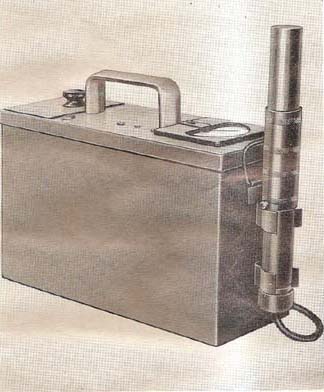
AN/PDR-7 (Instrument Development Laboratory, Model 2610) 1948
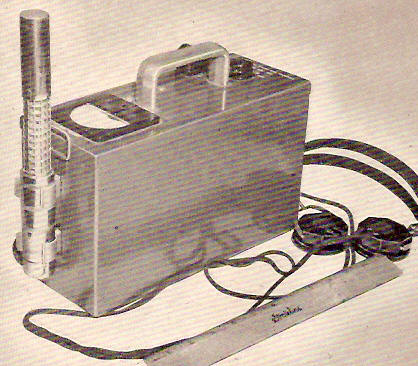
AN/PDR-7 (Nuclear Instrument and Chemical Company, Model 2610) 1948
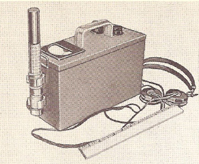
AN/PDR-7 (Nuclear Instrument and Chemical Company, Model 2610) 1950
The AN/PDR-8, 8A, 8B, and 8C were developed by Hoffman, RCA and Admiral in 1948. It was a beta-gamma survey meter in a kidney shaped housing. The radiac set had ranges of 0-0.5, 0-5, 0-50 and 0-500 mR/h. It use a halogen-filled mica end window tube for high sensitivity and a second halogen filled tube for low sensitivity. The beta window as 3-4 mg/cm2. The external probe was 8" x 1-3/8" x 1-3/8" on a 60 inch cable. There was also an optional extension probe. The irregular kidney shape had dimensions of 10" x 6-1/2" x 7". The models ranged in weight from 11.5 to 14.1 lbs.
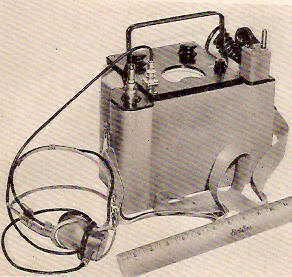
AN/PDR-8 1951
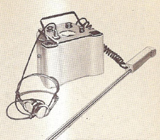
AN/PDR-8 with Extension Probe 1951
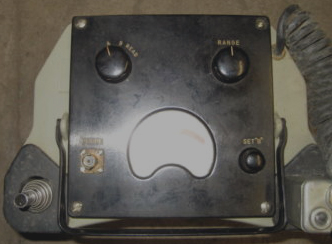
Hoffman AN/PDR-8B
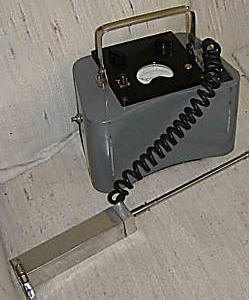
AN/PDR-8C with long probe
The AN/PDR-8C and AN/PDR-8D from March 1950 in the Instruction Book for Radiac Sets by Admiral Corporation (NASHIPS 91295) indicated the units were portable, battery operated units designed to detect and measure beta and gamma radiation. The units are basically the same except that the meter in the 8C is rated in mR/h and the meter in the 8D is rated in R per 24 hours. The units are kidney shaped, water proof of welded aluminum construction. The detector is a high sensitivity Geiger-Mueller tube enclosed in a aluminum probe. It has a beta window and shield. The cable is 60 inches. There is a telescoping probe extension and be collapsed when not in use. It came with a test sample containing a small amount of radioactive material. The unit was 10-7/8 in x 7-5/32 in x 7-27/32 in and weighed 9-3/4 lbs. The detector was 8-1/2 in x 1-7/8 in x 1-5/8 in and weighed 2 lbs.
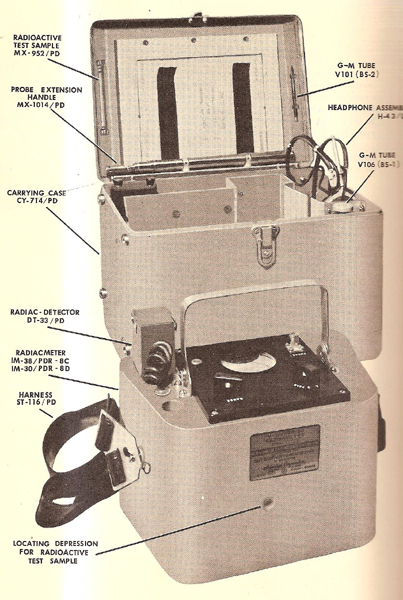
AN/PDR 8C and 8D 1950's
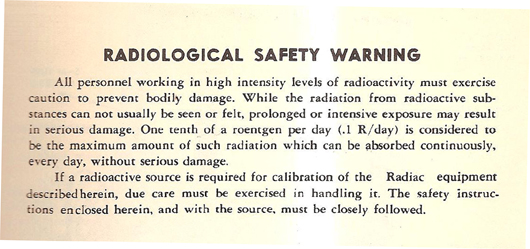
The book AN/PDR instruction manual has this radiological safety warning
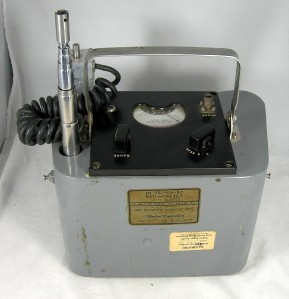
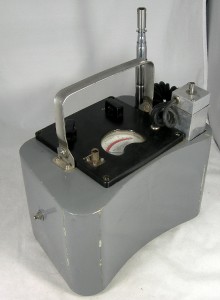
AN/PDR 8C 1950's
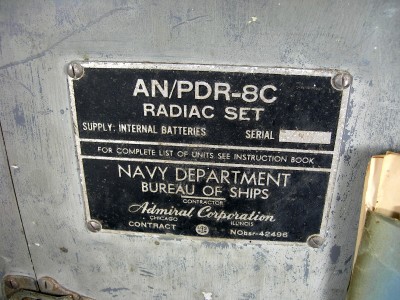
AN/PDR 8C Label 1950's
Argonne National Laboratory developed a portable beta-gamma unit with an air ionization chamber under a contract with the AEC. The chamber was at the end of a four foot cable. It was code named Betty Snoop and was obsolete by 1948. It had ranges of 0.2, 2. 20 and 200 R/hr. The unit measured 4" x 8" x 8". The case was metal with a smooth finish with a handle on the top. The unit was identified as Model Number C2M10 and designated as AN/PDR-9.
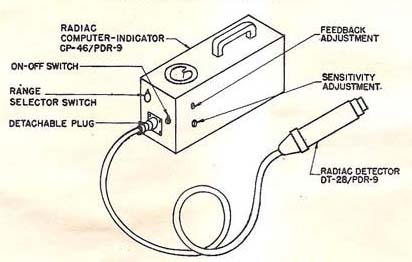
AN/PDR-9 (Argonne National Laboratory, Betty Snoop) 1948
An improved version of the "Alpha Poppy" developed at Argonne National Laboratory was designed AN/PDR-10. In 1948, it was in the advanced prototype stage. It employed an air proportional counter with the detector on the bottom side of the case. It had scale readings of 0-1,000 and 0-10,000 and had a plyofilm window on the bottom of the case. The probe window is 105 cm2. The unit weighed 5 lbs. and measured 12-1/2" x 4-1/2" x 2-1/2".
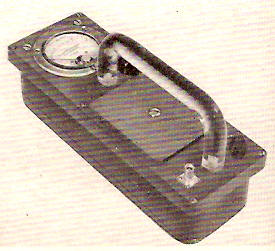
AN/PDR-10 1948
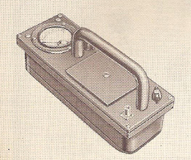
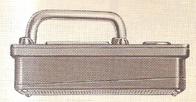
AN/PDR-10 1948
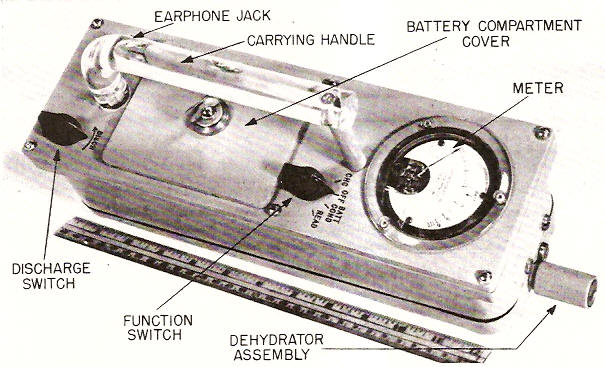
AN/PDR-10A 1955
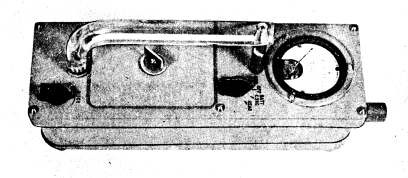
AN/PDR-10 1957
The later versions of the unit had a rapid discharge switch which would eliminate the corona (i.e. too high a voltage) or rapid counting. The corona discharges causes a hiss in the headphones. The proper operating model should give about 3 clicks per minute.

AN/PDR-10 1959
The AN/PDR-11 (XN- )was under experimental testing in 1950. It is an alpha survey meter with range up to 10,000 dpm. It used a phosphor and photomultiplier tube in the external probe. The case is 6 x 3 x 12 and weighs 12 lbs.

Bureau of Ships AN/PDR-11 1950
The AN/PDR-15 was a beta-gamma survey meter. It had four ranges of 0.5, 5, 50 and 500 mR/h. It had two halogen-filled tubes, one had a mica end window for high sensitivity. The probe was 7-3/4" x 1-3/8" on a 60 inch cable. The unit weighed 11 lbs. and measured 11-1/4" x 4-3/8" x 3-1/2". The end window tube holder is placed in the hole between the two control knobs when not used at a distance from the body of the instrument.
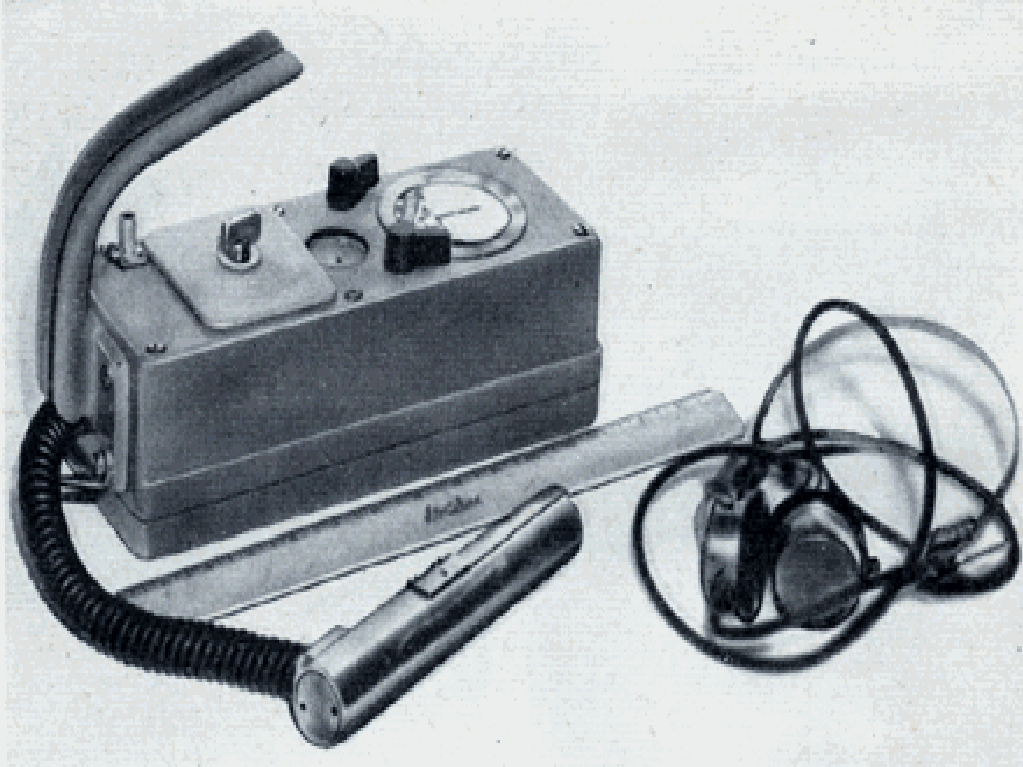
AN-PDR-15 1950
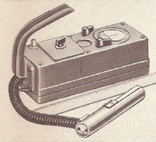
AN-PDR-15 1950
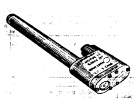
AN/PDR-17 1958
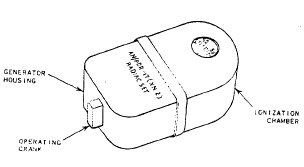
AN/PDR-17 (XN-2) 1958
There were three units in the Model 18 series the AN/PDR-18, the AN/PDR-18A and the AN/PDR-18B. The AN/PDR-18 is a gamma detector under experimental testing in 1950. The are several form factors being investigated. The unit has a range from 0.5, 5, 50 and 500 R/h. It used a phosphor and photomultiplier. The unit was 6 x 4 x 10 and weighed 8.5 lbs.
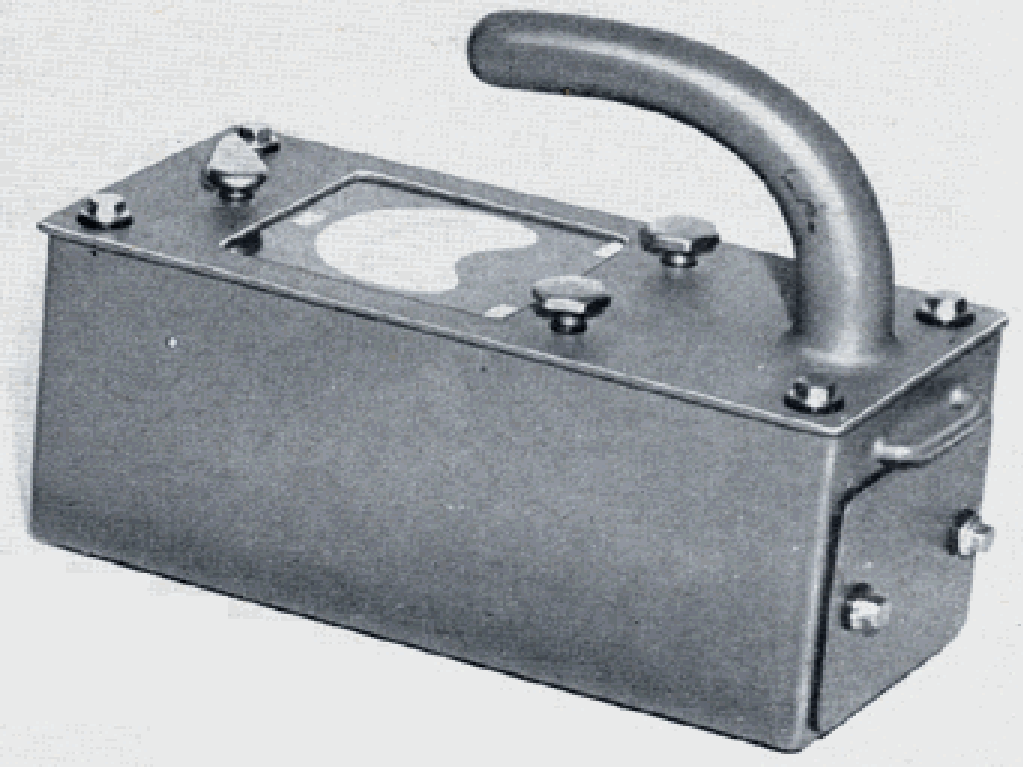
Bureau of Ships Form 1 AN/PDR-18 (experimental form factor) 1948
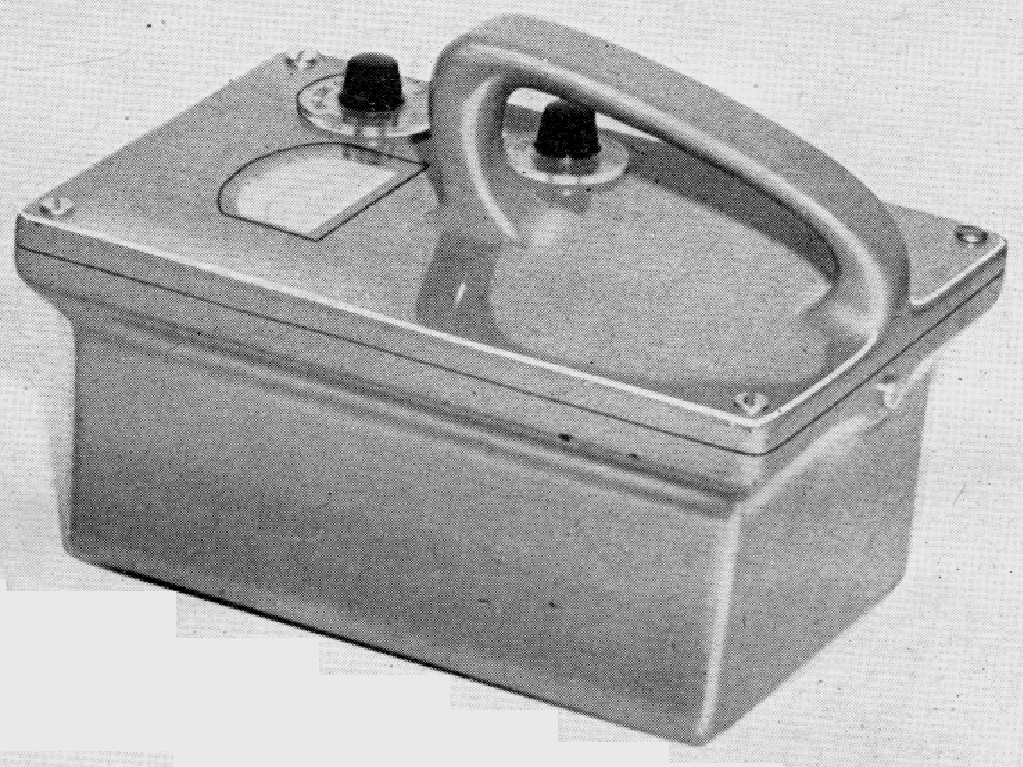
Bureau of Ships Form 2 AN/PDR-18 (experimental form factor) 1948
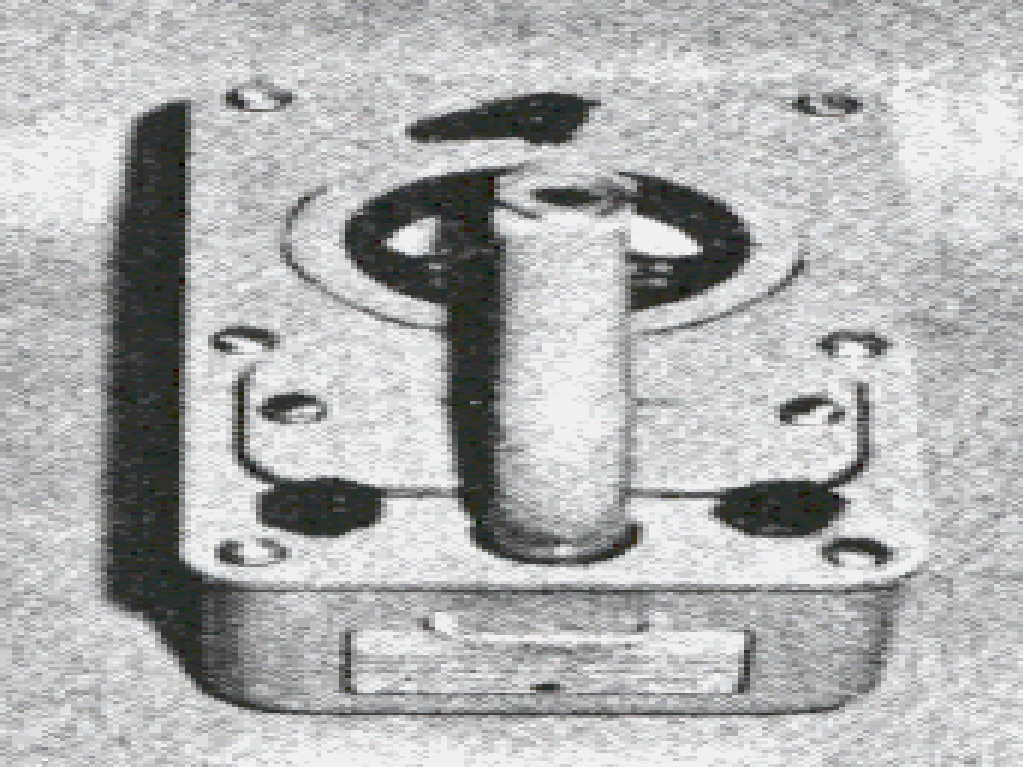
AN/PDR-18 1955
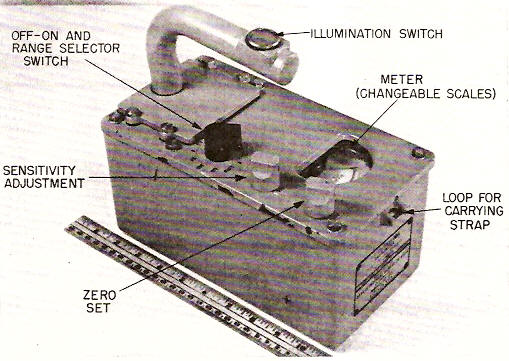
AN/PDR-18A 1955
The later models of the AN/PDR-18 used a scintillation crystal for higher sensitivity. The unit could measure ranges of 0.5, 5, 50 and 500 R/h. It had an embedded radiation source and a source check switch to verify proper operation and calibration.
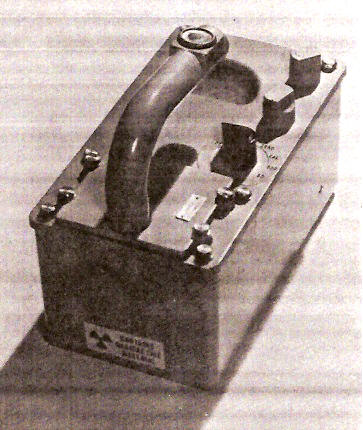
AN/PDR-18 1959
The AN/PDR-18A was a modified Model 18 in 1953. It could measure 0.5, 5, 50 and 500 R/h. It used a gamma sensitive phosphor detector with a photomultiplier tube. Some units used a stylbene detector for added stability. Stylbene is not as efficient as sodium iodide but it is easier to grow and cheaper.
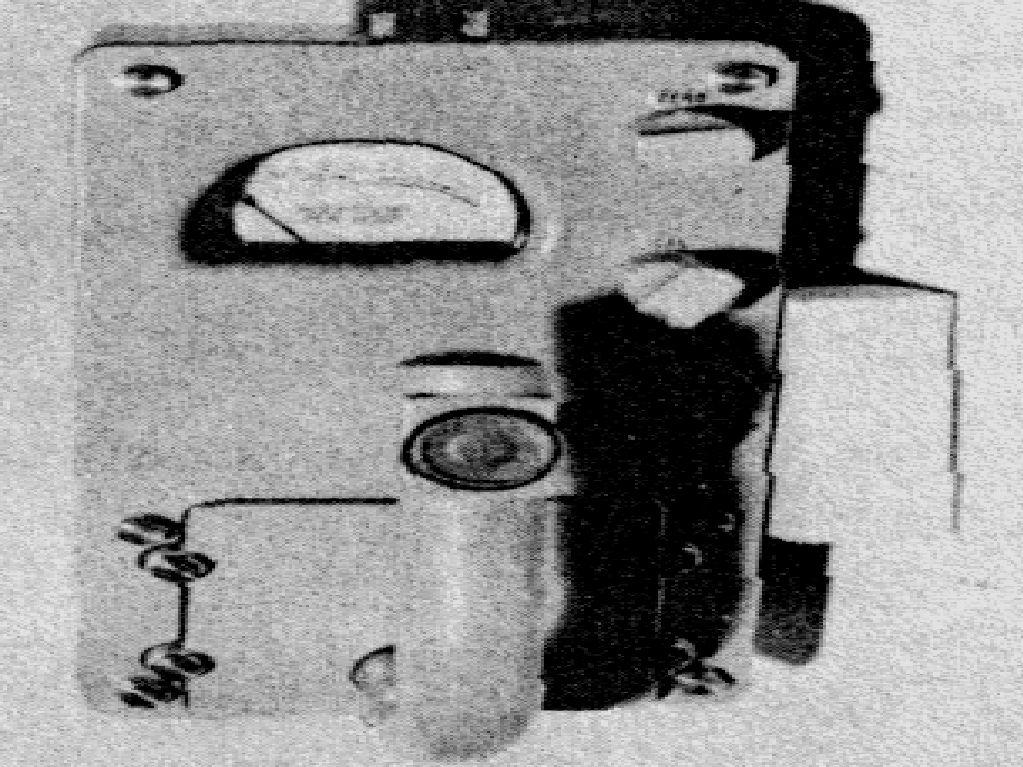
AN/PDR-18A 1953
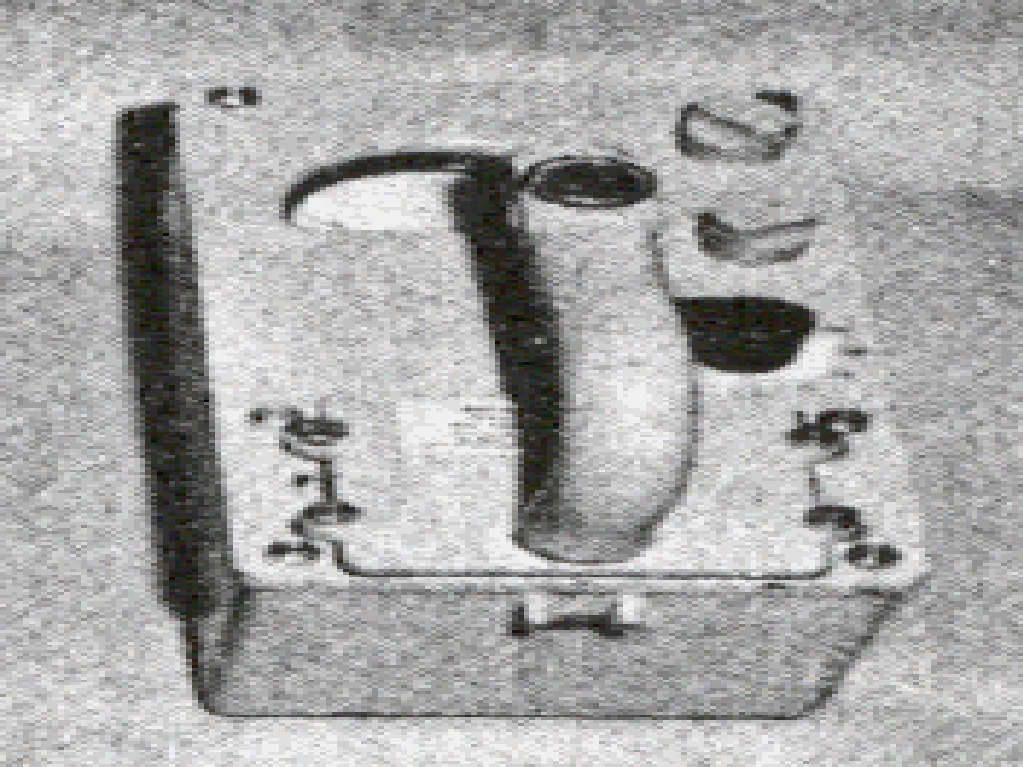
AN/PDR-18A 1955
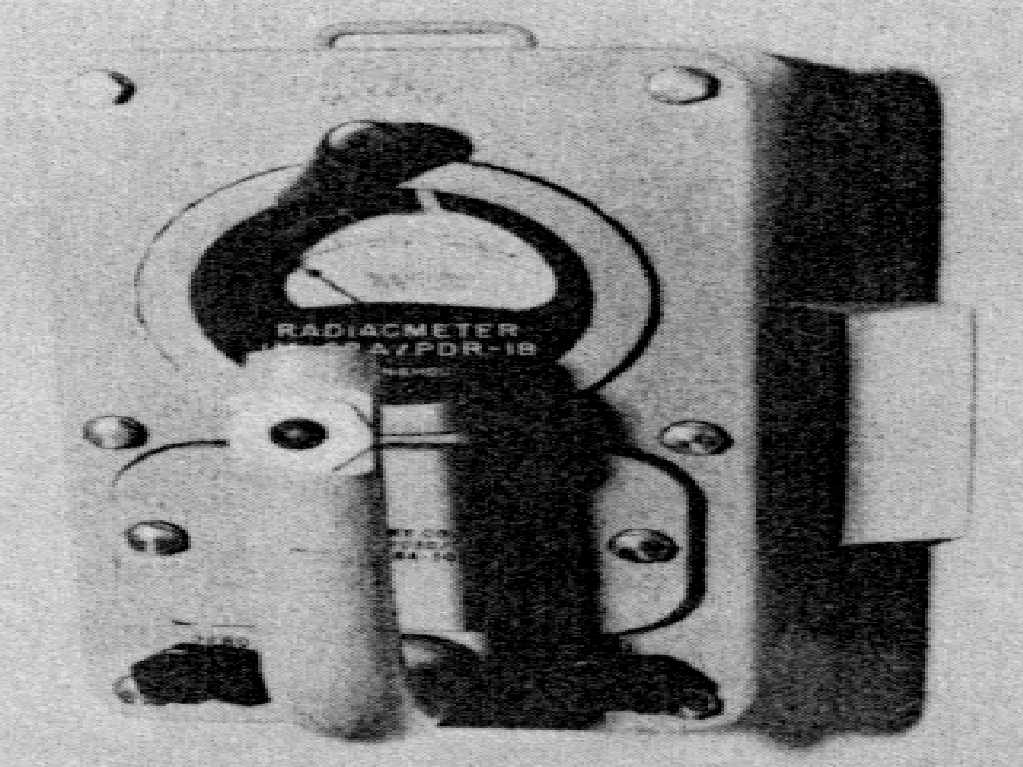
AN/PDR-18B 1953
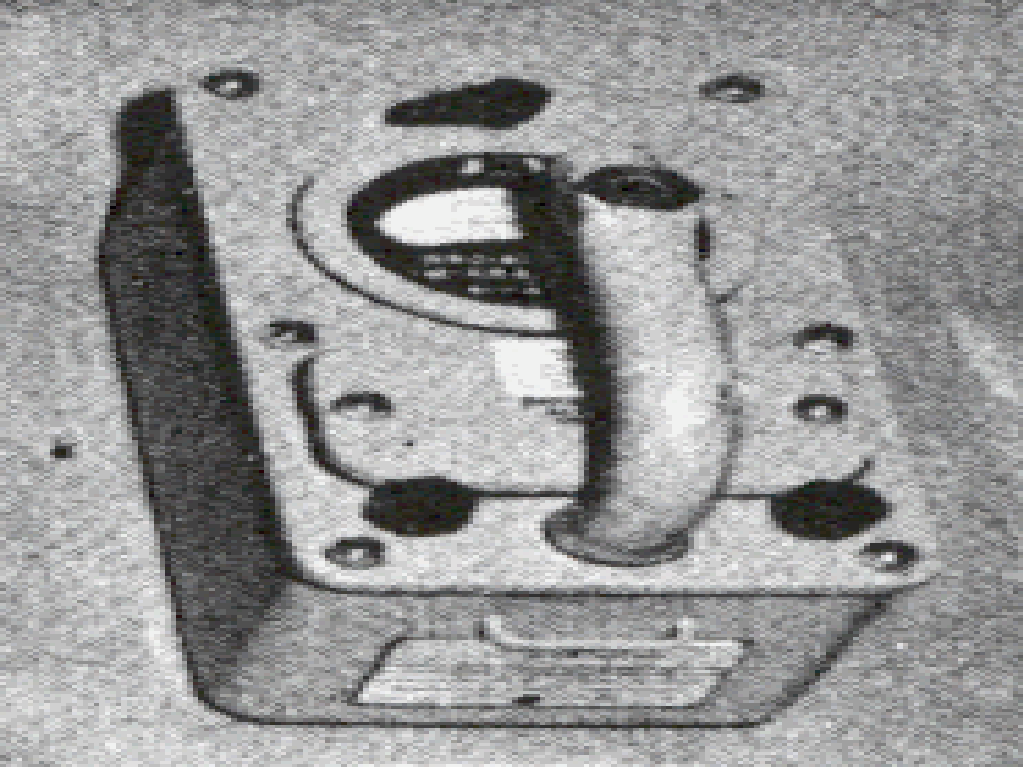
AN/PDR-18B 1955
The Rauland "Zeus", also known as AN/PDR-20 by General Electric Company, is a discriminating instrument for detecting airborne alpha, beta and gamma radiation. It was manufactured by Rauland Manufacturing Company. The unit, Model Z-100, had ranges of 25, 100, 500 and 2500 mR/h. It weighed 10-1/3 lbs. and measured 13" x 10-3/8" x 5-3/8". The unit was the forerunner for the development of a military specifications model AN/PDR-20.
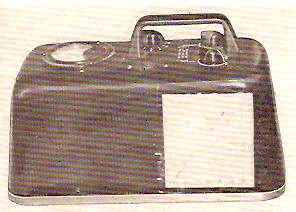
Rauland Zeus (AN/PDR-20) 1948
The Zeus-type instrument, designated AN/PDR-20 (XN-1), was an experimental model manufactured by the General Electric Company as a radiac set to military specifications. The unit had ranges of 0.025, 0.25, 2.5 and 500 R/h. It had an alpha shield (0.003" aluminum) and beta shield (1/8" bakelite). Beta and gamma shields are moved by means of the controls on either side of the handle. The chamber was 88 cubic inches. The unit weighed 10 lbs. and measured 9-1/4" x 6" x 6-7/8".
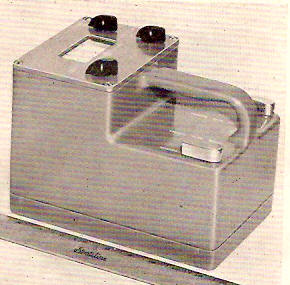
AN/PDR-20 (XN-1) (General Electric) Experimental "Zeus" Model 1948
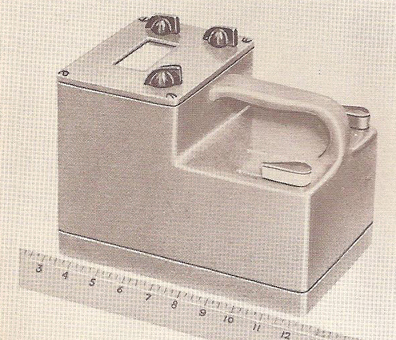
AN/PDR-20 (XN-1) (General Electric) Experimental "Zeus" Model 1951
The Radiacmeter Model AN/PDR-23 (XE-3) was introduced in 1953. It was a redesign of the XE-1 and XE-2 units. It is a probe type ion chamber and a remote sensitive probe. It was 9 x 6 x 3 and weighs 5 lbs. The probe is cylindrical, 2 diameter x 4 long, and weighs 12 oz. This unit had particular application for aircraft or vehicle measurements where the probe needed to be on the outside of the aircraft or underneath the vehicle.
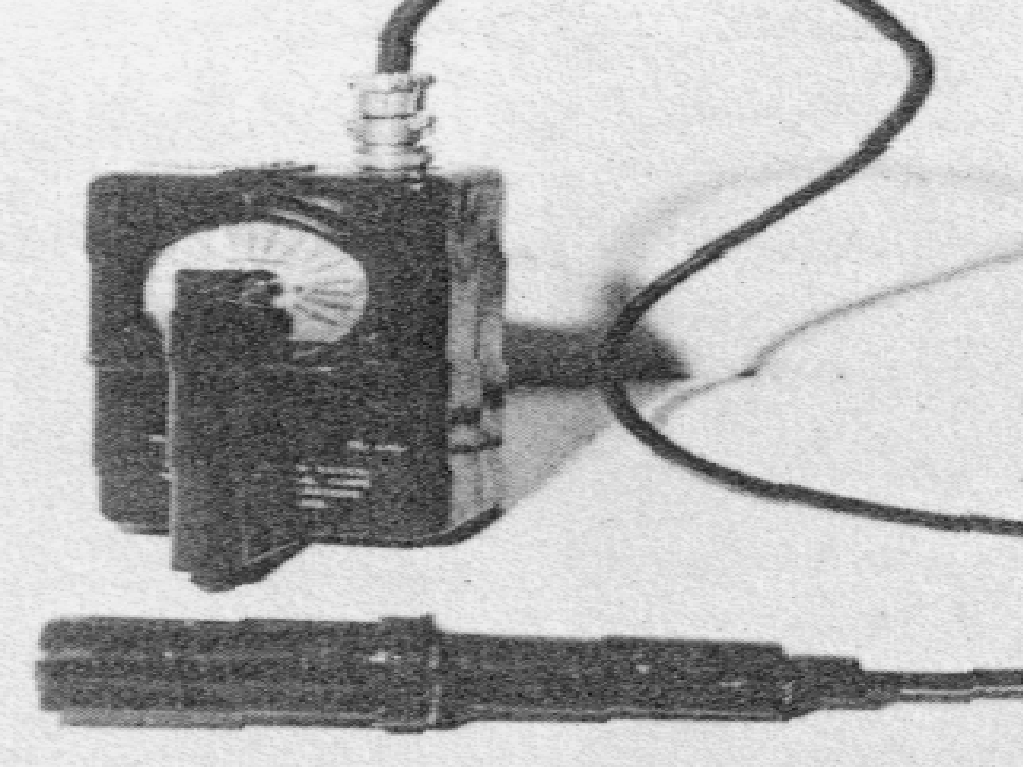
Radiacmeter AN/PDR-23 (XE-3) 1953
The El-Tronics, Model SM3, was a commercial unit designated at AN/PDR-26. The unit measured beta and gamma. The probe had an opening of 4-1/2" x 7/8" x 1-7/8" and detachable via a 30 inch cable. The probe was 7-1/4" x 7/8". The beta shield was 2 mm brass. The scales were 0-0.2, 0-2.0, and 0-20 mR/h. The unit weighed 8-3/4 lbs. and measured 9-3/4" x 5" x 6". The case was welded aluminum.
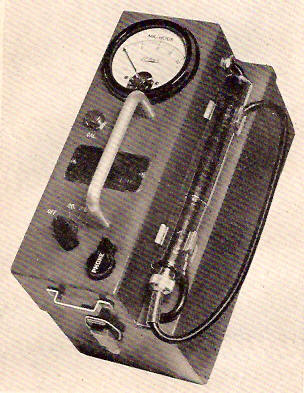
AN/PDR-26 (El Tronics) 1948
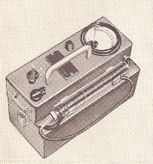
AN/PDR-26 (El-Tronics Model SM-3) 1948
General Electric manufactured the AN/PDR-27. It was also manufactured by Admiral and Hoffman. It was a beta-gamma survey meter with ranges of 0.5, 5, 50 and 500 mR/h. It contained two halogen-filled tubes, one with a mica end window for sensitivity in the probe. The internal probe was contained in the metal case and had ranges of 50 and 500 mR/h. There was also a second external probe which measured 8" x 1-3/8" x 1-3/8" on a 60 inch cable. It contained an end-window GM tube and had ranges of 0.5 and 5 mR/h. The unit could detect betas with the end shield open. The dial could be illuminated by tilting the unit 30 degrees with the meter end up or using the light button. The unit came with a plastic stick containing 7 microcuries of either radium or Co-60. The stick had a purple end which was inserted into the "case dimple". It also mentioned in the operating instruments that the detector could be check for operation by noting the response to a "luminous dial wrist watch" which contained radium. The was a long range of modifications to the AN/PDR-27 series. The unit weighed 10.2 lbs. and measured 9-1/4" x 5-3/16" x 4-1/2".
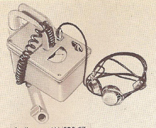
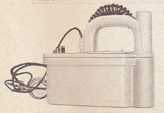
AN/PDR-27 Geiger Counter 1950
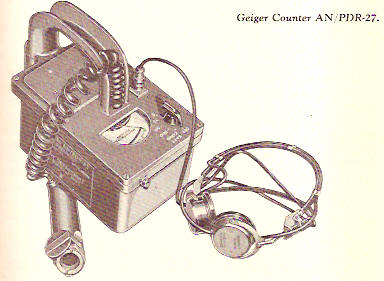
AN/PDR-27 Geiger Counter 1953
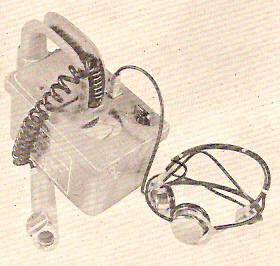
AN/PDR-27 Geiger Counter 1953
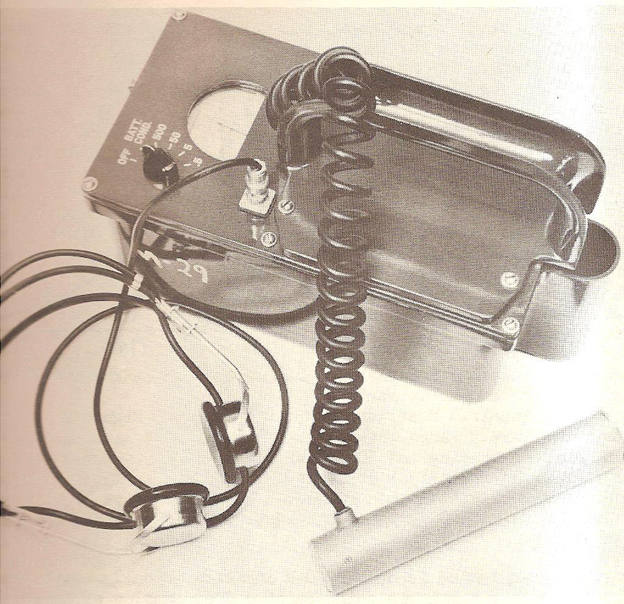
AN/PDR-27 1957
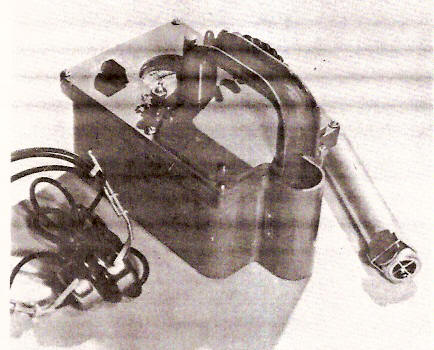
AN/PDR-27 1959
The AN/PDR-27A is a portable meter that provide visual, audible, detection and computation of radioactivity data. It can detect beta and gamma together or gamma radiation alone. It is used to monitor personnel, objects or areas for contamination of low intensities. It has a GM tube in a detachable probe. Sensitivity ranges are 0.5, 5, 50 and 500 mR/h. It measures 13-1/8 in x 10-5/8 in x 9-5/8 in.
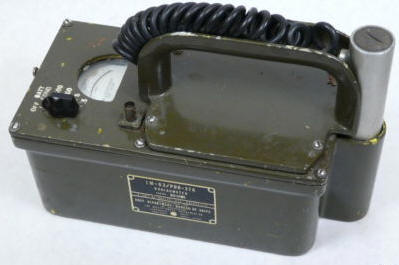
AN/PDR-27A 1959
The Radiacmeter Model IM-74/PDR-27C was built by Marion Electric Instrument Company as Model 100m-19, U.S. Navy type CMY 22734. It is 8" high x 12.5" long with a width of 6". It measured in mR/h.
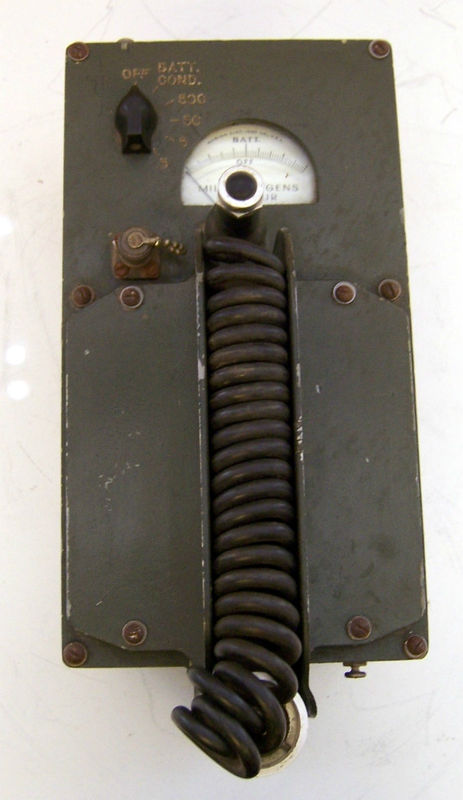
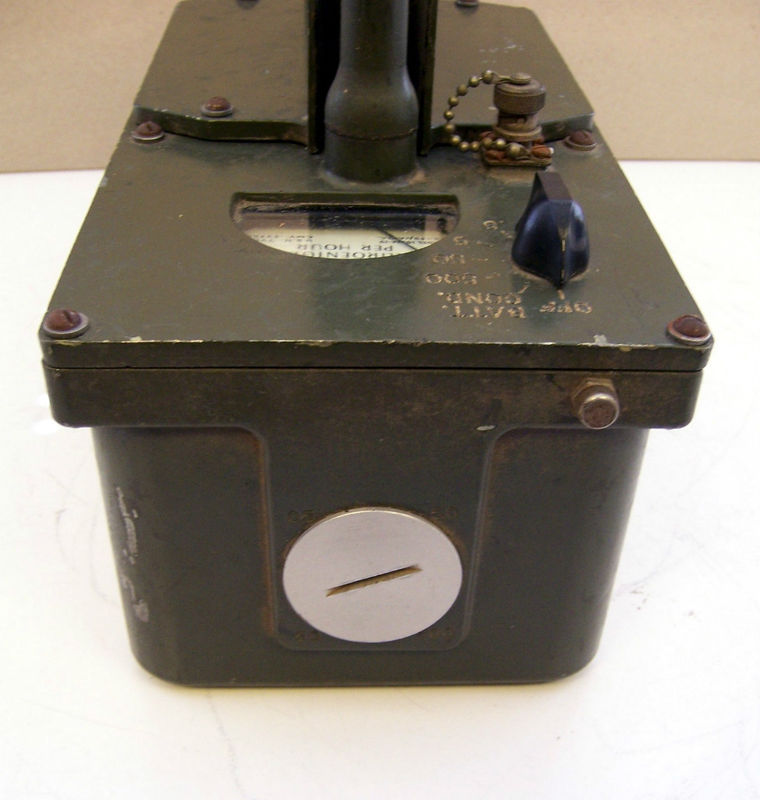
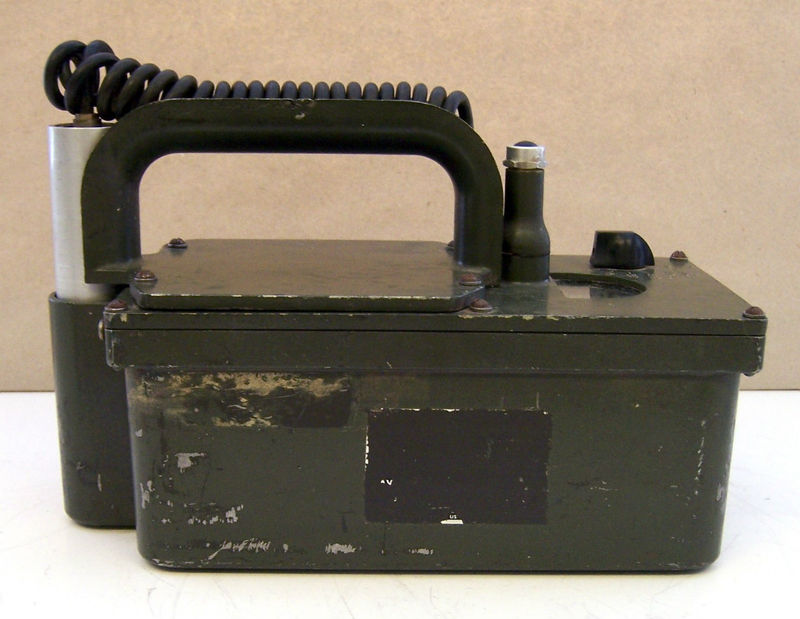
Radiacmeter IM-74A/PDR-27A 1959
The Radiac Set AN/PDR-27C was offered in 1953 for measuing gamma and beta radiation. It has four scale of 0.5, 5, 50 and 500 mR/h. By tilting the unit 45 degrees with the meter up, the meter can be illuminated, no switch is required.
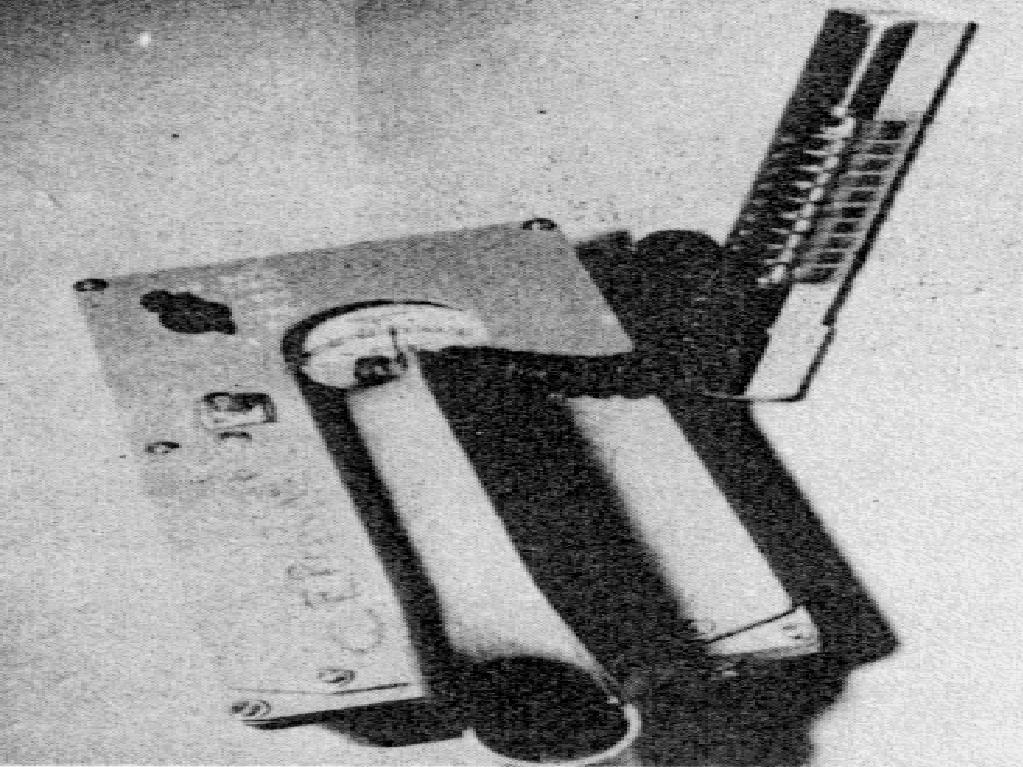
AN/PDR-27C 1953
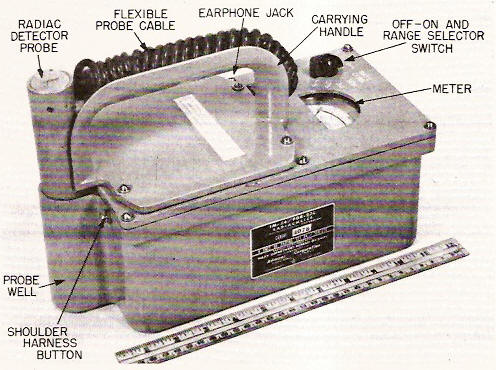
AN/PDR-27C 1955
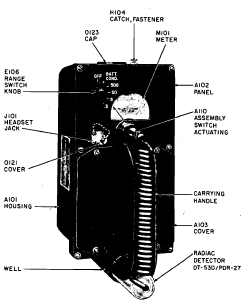
AN/PDR-27E 1952
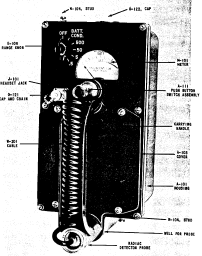
AN/PDR-27G 1953
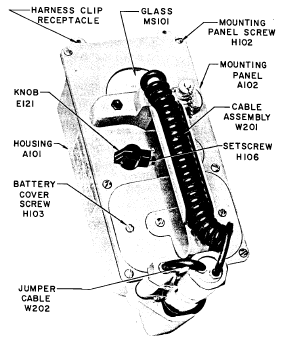
AN/PDR-27J 1958
The Model AN/PDR-37 (XN-3) Radiac Set was introduced as a prototype in 1953. It has a miniature high range 0.005 to 500 R/h beta gamma survey probe. It measured 6 x 3 x 3 and weighs 2.5 lbs.
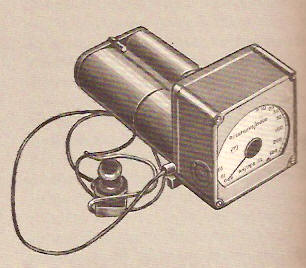
AN/PDR-32 1953
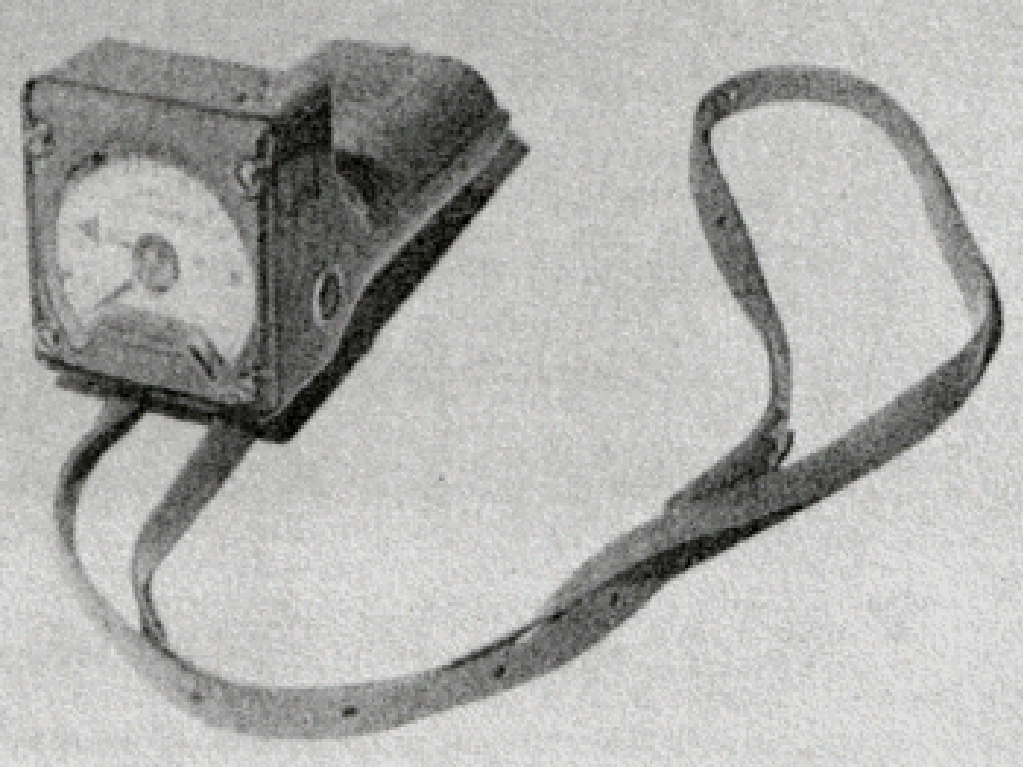
AN/PDR-32 (XN-3) 1953
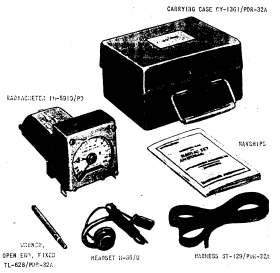
AN/PDR-32A 1960
The AN/PDR-36 was developed in 1953 as a miniature survey meter with an ionization chamber. It was an experimental form of the IM-71/PD. It has readings of 0.03, 0.5, 5, 50 and 500 R/h. The unit could easily fit in a shirt pocket.
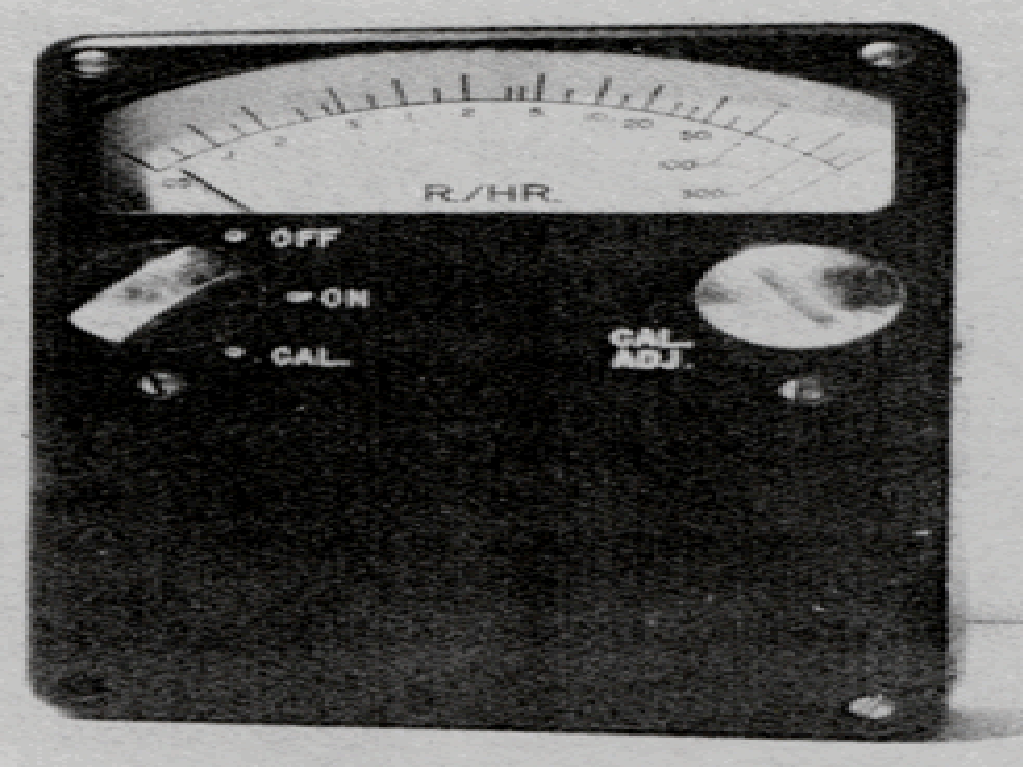
AN/PDR-36 1953
The AN/PDR-37 (XN-1) was an experimental laboratory radiac Geiger counter evaluated in 1952. It was designed as a meter less unit for conducting radiological surveys. The unit was compact and built into a flashlight type case. The gamma dosage rates are measured by the angle through which a circular potentiometer must be rotated to quench a characteristic tone heard in a hearing-aid earphone. When the radiation level is low, no tone is heard. When the radiation level increases above a preset value, a tone is heard. This is often referred to as a go or no-go system. The evaluation concluded that meter less radiacs would have serious limitations over current metered systems.
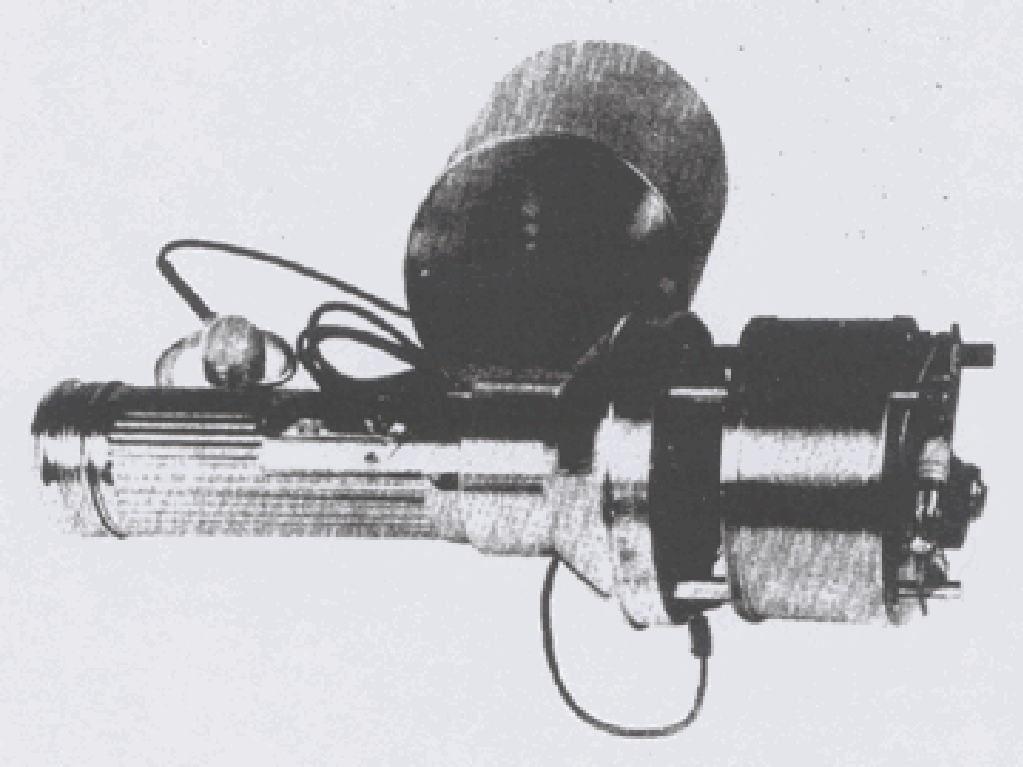
AN/PDR-37 (XN-1) "Meter Less" Radiac 1952
The AN/PRD-39 is an ionization chamber survey meter for detecting high range gamma radiation. It was developed by Tracerlab for the Signal Corps of the U.S. Army. The range was 5, 50, 500, 5000 and 50,000 mR/h. It measured 10-1/2" x 6-1/4" x 8" and weighed 11 lbs. It included an internal Sr-90 check source. The Navy version was orange and the army version was olive green. Also designated the AN/PDR-T1B as the later versions in 1959 replaced the AN/PDR-T1, -T1A and -T1B training sets.

AN/PDR-39
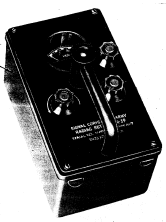
AN/PDR-39 1956
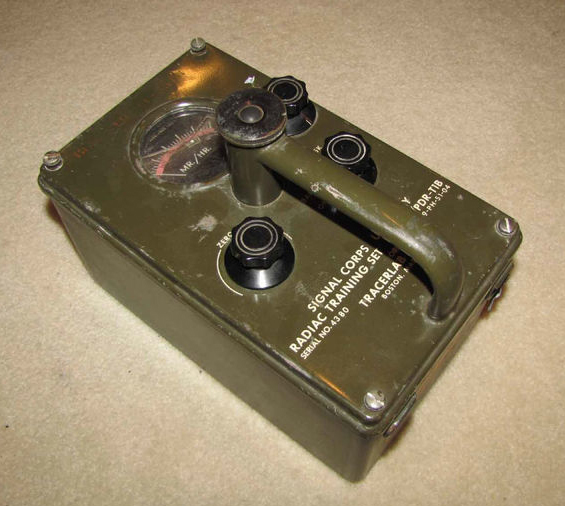
Radiac Training Set Model PDR T1B 1950's
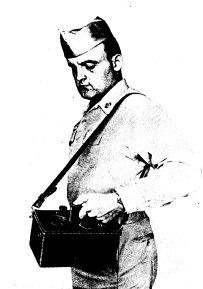
AN/PDR-39 1956
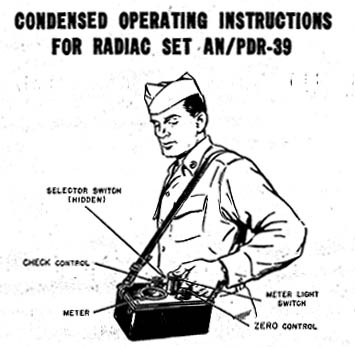
AN/PDR-39 1956
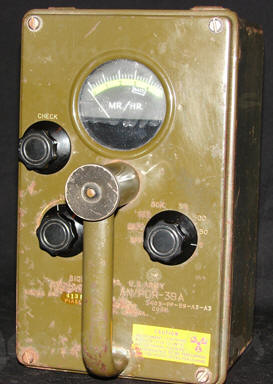
AN/PDR-39A late 1950's
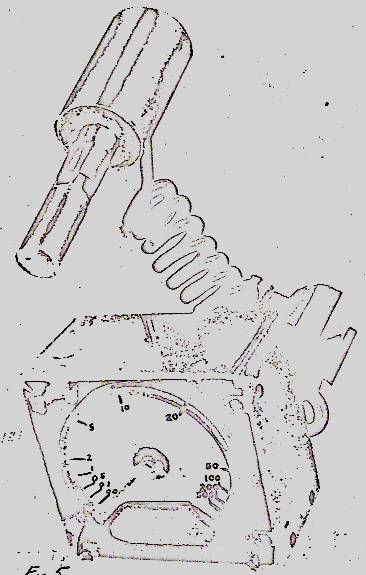
AN/PDR-40 1952 (need color photo)
The Model AN/PDR-43 was a beta-gamma radiac with a beta shield to allow measurement of both beta-gamma or only gamma. It was manufactured by Electronic Products and Electro-Neutronics. The unit has a GM tube embedded in a probe with an thin window on the end and halogen-filled. It is a "pulsed" (time controlled) unit. The ranges are 5, 50, and 500 R/h. The unit had a beta source slide on the bottom of the instrument for discriminating and measuring the beta and gamma radiation. The unit contains a 30 microcurie Sr-90 beta source for checking the response of the detector. The Operation Check position exposes the source to the GM tube. In the gamma position, only gamma is detected and in the beta position, with the end window of the GM tube exposed. The unit measured 8" x 4" x 3-1/2" and weighed 4.5 lbs.
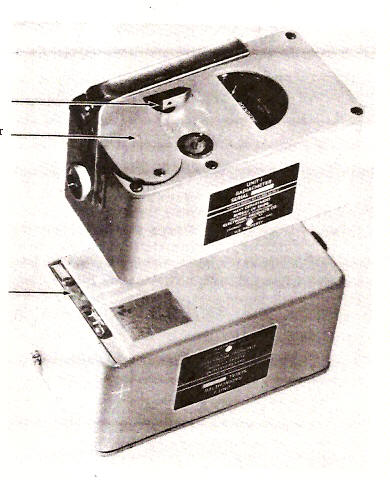
AN/PDR-43 1959
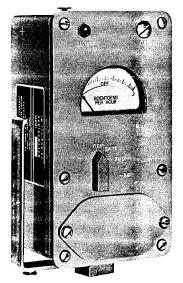
AN/PDR-43 (front view) 1959
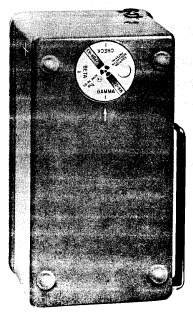
AN/PDR-43 (rear view) 1959
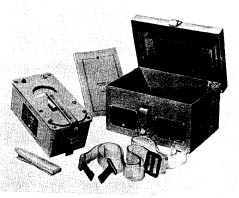
Radiac Set AN/PDR-43
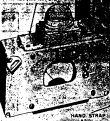
AN/PDR-44 (XN-1) 1958
The AN/PDR-46 was a portable beta, xray and gamma instrument (Beckman Model MX-5)to monitor incoming patients in fixed medical facilities to determine if their clothing or body surfaces are contaminated. It has a GM tube on a detachable probe with ranges of 0.2, 2 and 20 mR/h. It is a low range instrument and susceptible to jamming when exposed to radiation intensities higher than 20 mR/h.
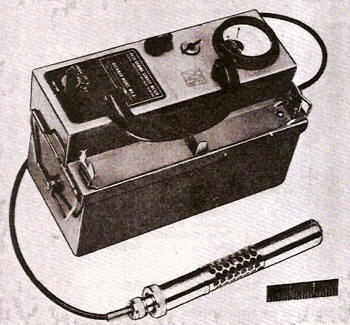
AN/PDR-46 1959
The AN/PDR-47 was an interim model of the fast neutron detector. It used a proton-recoil neutron detector in an external probe for fast neutrons. The unit had ranges of 5, 500 and 5,000 mR/h for neutrons.
.jpg)
AN/PDR-47 (Interim Model) 1950's
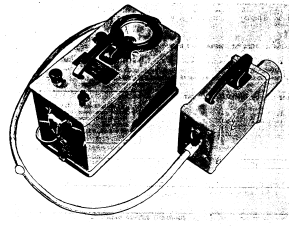
AN/PDR-47 1960
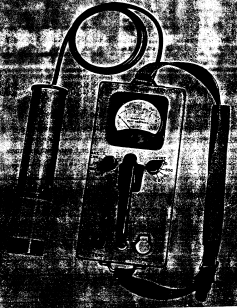
AN/PDR-47A 1960
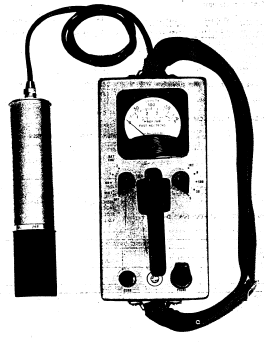
AN/PDR-47B 1960
The AN/PDR-49 was an interim model of the fast/slow neutron detector. It used a boron-filled (BF3) counter with a removable shield. The boron is enriched with the B-10 isotope for increased sensitivity to slow neutrons. The shield consisted of a cadmium-shielded wax moderator. With the shield on, it could detect fast neutrons and with the shield off, slow neutrons. The unit had ranges of 250, 2500 and 25,000 n/cm2/sec. It was calibrated using a radium-beryllium neutron source. The response to gammas up to 5 R/h was negligible.
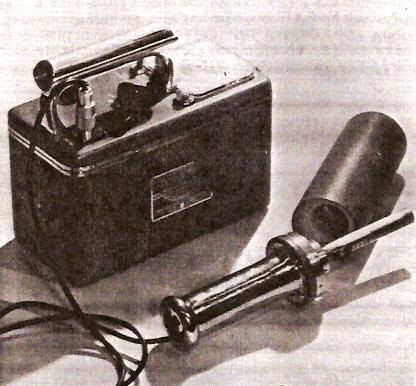
AN/PDR-49 (Interim Model) 1950's
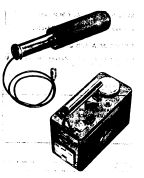
AN/PDR-49 1960
The AN/PDR-53 was available in 1959. It could detect alpha, beta, gamma and x-rays but was acquired to specifically to detect the presence and measurement of Plutonium-239. It has three ranges of 50, 500 and 5000 mR/h. The alpha screen is 3 mil rubber hydrochloride, the alpha rejection material is 0.01 in cellulose acetate sheet, and the beta rejection material is 0.102 in aluminum. The ion chamber is 27 in3. It comes with a Plutonium source on a sheet for calibration.
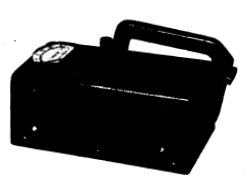
AN/PDR-53 1959
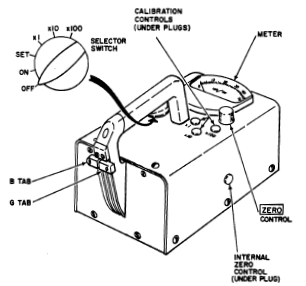
AN/PDR-53 (picture) 1959
The AN/PDR-54 was developed by Eberline as the Model PAC 3-G. It was an alpha contamination meter containing a propane gas-flow proportional counter with thin window (0.85 mg/cm2 mylar) in a detachable probe. The probe has a surface area of 60 cm2. The unit had ranges of 1000, 10,000 and 100,000 counts per minute. The Model PAC 3-GN is the same instrument but uses military earphones. The upper part of the case contains the electronics and the lower part of the case contains a bottle of compressed propane with flow control valves. The propane can be controlled by a two position switch - one position to flush the air from the probe during warm-up and the second one for operation which allows the propane to flow through the chamber. It takes 2 minutes to flush the chamber of air.
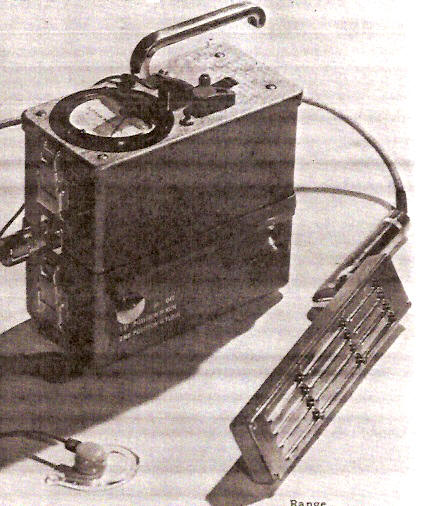
AN/PDR-54 (Eberline PAC 3-G) 1950's
The IM-3/PD Ionization Chamber was developed by Victoreen Instrument Company in 1948. It was commercially known as the Model X-247 Rate Meter. The Model X-247 had ranges of 0.2, 2, 20 and 200 R/h. The unit measured 6" x 12" x 10" and weighed 10 lbs. It was soon followed by the improved Model 247A which had ranges of 0-2.5, 0-25, 0-250 and 0-2500. The ionization chamber was 56 cubic inches and filled with air at atmospheric pressure. The unit weighed 12-7/8 lbs. and was 10-11/32" x 5-11/32" x 12-59/64". The case was 1/8 inch cast aluminum with baked grey enamel finish. By 1948, the unit was obsolete have been used extensively for survey work in Operation Crossroads.
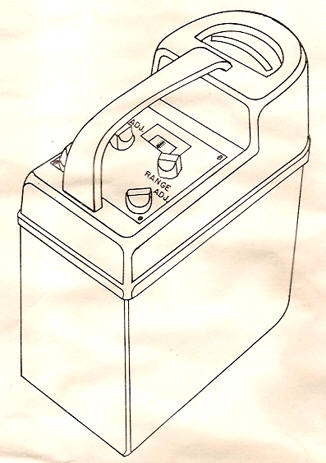
IM-3/PD (Victoreen Instrument Company, Model X-247) 1948
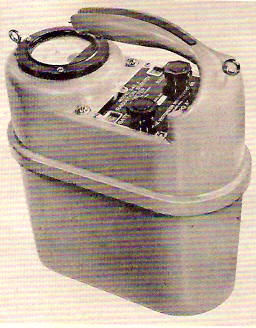
IM-3/PD (Victoreen Instrument Company, Model 247A) 1948
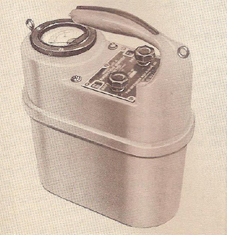
IM-3/PD (Victoreen Instrument Company, Model 247A) 1948
The Zeuto was developed by the Victoreen Instrument Company as Model 356 and under the AEC as the Super-Zeuto. It could detect alpha, beta and gamma radiation. It was medium sized instrument with thin windows on one side of the air ionization chamber. There could be multiple slides to discriminated alpha and beta radiation. The range was 0-6000 and 0-60,000 disintegrations for alphas, and 0-4 and 0-40 mR/h for gammas or beta and gamma combined. The meter weighed 6 lbs. and measured 9-1/2" 6" x 5".
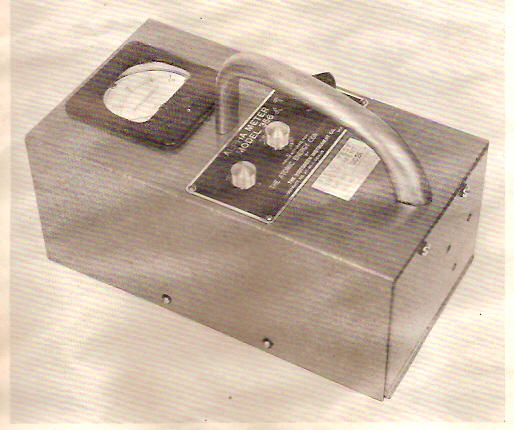
IM-4/PD (Victoreen Instrument Company, Model 356) 1948
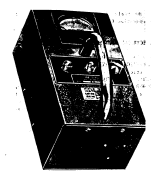
IM-4/PD 1958
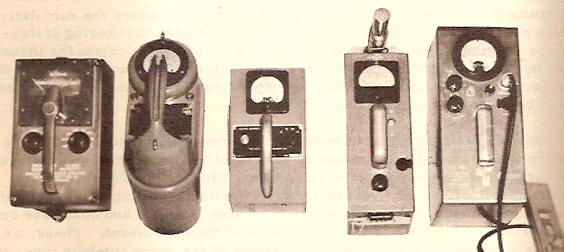
Collage of Commercial Instruments used by the Navy 1952
The IM-5/PD was developed by two manufacturers - Sylvania Electric Products, Model RD-316, and Tracerlab, Inc., Model SU-A1. It was known by the AEC as the Cutie-Pie with the characteristic pistol grip. It was a beta-gamma survey meter with ranges from 40, 400 and 4000 mR/h for the Sylvania and 25-2500 mR/h for the Tracerlab. The air ionization chambers were 3" diameter x 6" long and were constructed of paper or bakelite tubes coated with aquadag. The Sylvania used a aluminum 0.080 inch beta screen and the Tracerlab used a 1/8" bakelite screen. The units weighed 4 lbs. and measured 6-1/2" x 3" x 5".
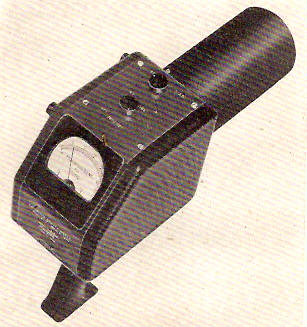
IM-5/PD (Tracerlab, Model SU-A1) 1948
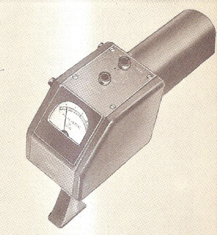
IM-5/PD (Tracerlab, Model SU-A1) 1948
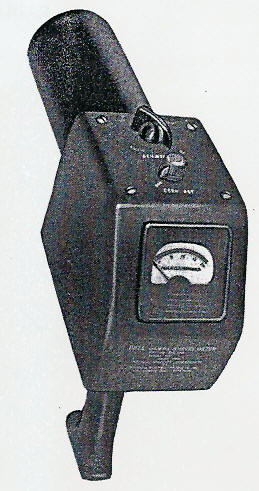
IM-5/PD (Sylvania, Model RD-316) 1948
The IM-7/PD Radiacmeter was commercially manufactured as the Landsverk Model L-100 Dosimeter. The original instrument with this design is the Lauritsen Electroscope manufactured by the Fred C. Hensen Company. It contains an air ionization chamber. The housing is low absorption tenite plastic. A hinged door at the front covers the ionization chamber window in case beta activity measurement is required. A sliding door on the bottom can be removed for measuring alpha activity. The opening is covered by a screen. The range was 0-100 and 0-1,000 mR/h. The unit weighed 4 lbs. and measured 7-1/2" x 4" x 8-7/8". A modified Lauritsen Electroscope was manufactured by Kelley Koett as the Model K-320.
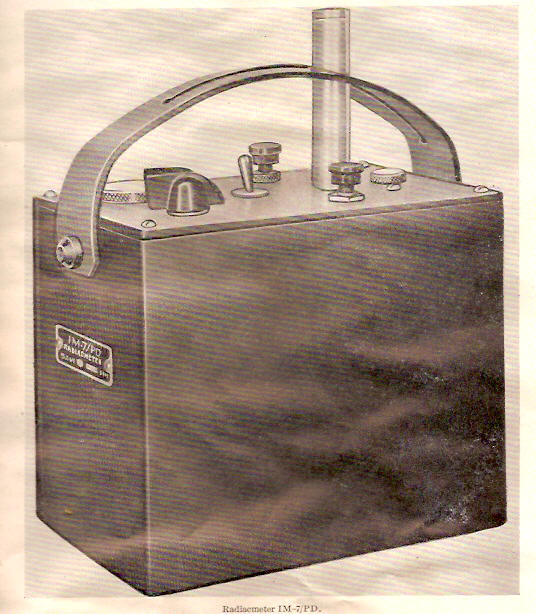
IM-7/PD (Landsverk Model L-100) 1948
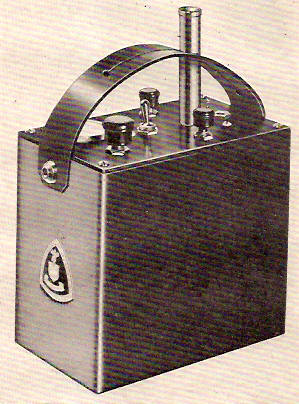
IM-7A/PD (Kelley Koett, Model K-320) 1948
The Radiacmeter IM-12/UD was known as the AEC Model CGM-3 Pocket Audio Detector. It was a portable pocket type unit with aural signaling for beta and gamma radiation. It had a GM tube with a slide window made of light weight aluminum for exclusion of betas. The unit weights 2 lbs. and measures 10-1/2" x 1-1/4" x 3-1/4".
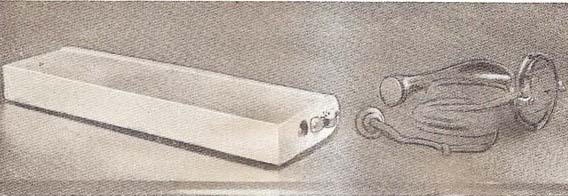
IM-12/UD (AEC Model CGM-3 Pocket Audio Detector) 1948
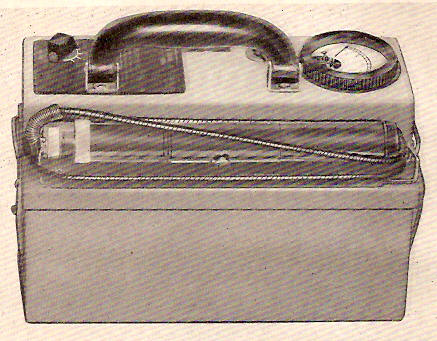
IM-39/PD
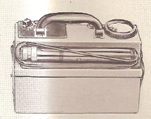
IM-39 PD (National Technical Laboratories Model MX-5) 1950
National Technical Laboratories developed the MX-6 (IM-40/PD) ionization chamber survey meter for the military in 1948. It had a range of 0-5, 0-50, 0-500, and 0-5000. The ionization chamber was 30.5 cubic inches and filled to 3 lbs. with monochloro-difluoro methan. It weighed 7-3/4 lbs. and had dimensions of 9.5" x 5" x 6". The case was welded aluminum with a grey hammertone finish.
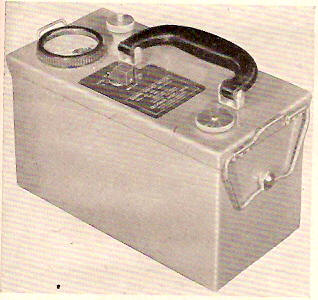
IM-40/PD (National Technical Laboratories, Model MX-6) 1948
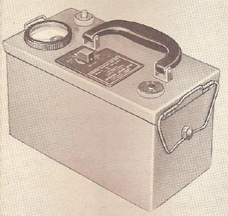
IM-40/PD (National Technical Laboratories, Model MX-6) 1948
The IM-108/PD is a rugged, portable meter used by radiological survey personnel to detect and measure gamma and x-rays in tactical surveying of radioactive fallout. It had mercury batteries, provisions for arctic use, and a check switch to test operation by pulsing he ion chamber. It has an ionization chamber with a low range of 0.1 to 15 R/h and a high range of 1 to 500 R/h. It had a logarithmic scale. The unit measures 6-1/2 in x 4-1/4 in x 4-7/8 in. It has an L-shaped profile. It replaced the AN/PDR-36.
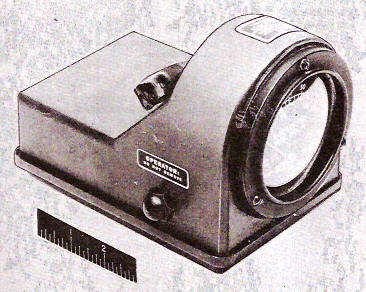
IM-108/PD 1959
The Cutie Pie Model CP-3DM was a beta gamma survey meter. The ionization chamber has a central electrode sealed in an air atmosphere. The walls of the chamber are 1/32" thick. It was described as the "wheel horse" for the health physicists in the laboratory. The unit had ranges of 100, 1000, 10,000 and 100,000 mR/h for beta and gamma. It came with a 1/4" boot made of polyethylene for the ionization chamber to eliminate betas for gamma only measurements.
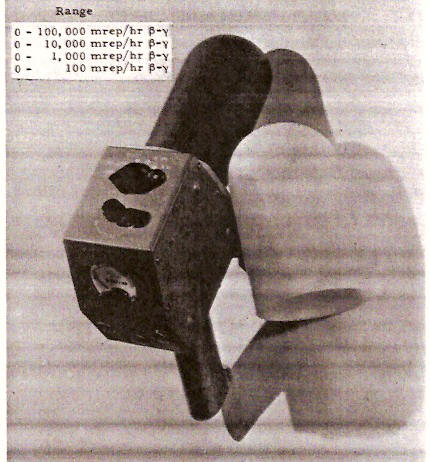
Model CP-3DM "Cutie Pie" 1959
Several commercial instruments were evaluated or used by the military in the 1950's. Examples of several of those instruments are highlighted below.
The National Technical Laboratories developed the Model MX-2 instrument using an ionization chamber which could measure hard gammas as well as soft gammas and betas. It was widely known as the Beckman Meter. The unit measured from 20, 50, 200, 500 and 2000 mR/h. The ionization chamber was 50 cubic inches made of bakelite coated with graphite. The window was 37-3/4 square inches made of 0.010 celluloid. The beta shield was 1/8" bakelite. The unit weighed 12.5 lbs. and measured 12-1/2" x 7-1/2" x 6-1/2". The case was welded aluminum with a grey hammertone finish.
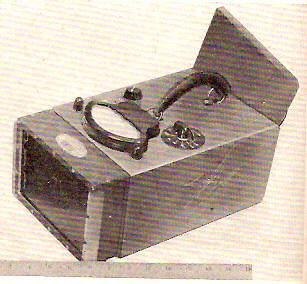
National Technical Laboratory Model MX-2 1948
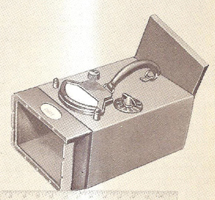
National Technical Laboratory Model MX-2 1948
The Juno was an alpha, beta and gamma survey meter. It could discriminate between all three types of radiation. The unit has an ionization chamber and a series of shields that can be put in place via a lever on the handle. The alpha shield is made of 0.01" cellulose acetate sheet and the beta shield is 0.1" cadmium. The ionization chamber has a 0.45 mg/cm2 rubber hydrochloride window. The unit has ranges of 50, 500 and 5,000 mR/h.
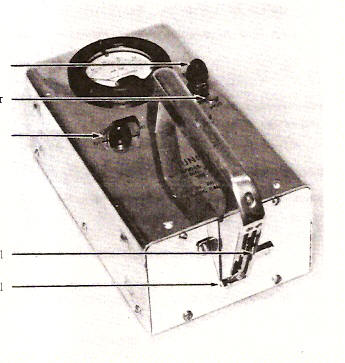
Two portable alpha proportional counters were developed by the Manhattan Project. The unit were found to not be useful in the military environment. The "Pee Wee", Model 2111, was designed at Los Alamos Scientific Laboratory and developed by the Nuclear Instrument and Chemical Corporation. IT was also denoted the Model 41-A and Model 48-A. It had a range of 0-2000 and 0-20,000 cpm. It weighed 16 lbs. and measured 11-7/8" x 5-3/8" x 8". The case was grey anodized aluminum.
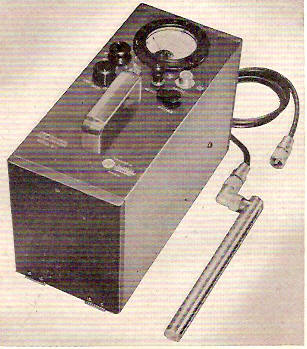
Pee Wee (Nuclear Instrument and Chemical Corporation, Model 2111) 1948
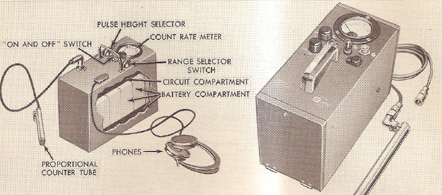
Pee Wee (Nuclear Instrument and Chemical Corporation, Model 2111) 1950
The Nuclear Chicago Company (formerly the Nuclear Instrument and Chemical Company) produced an improved version of the Pee Wee in the late 1950's. The probe was an air proportional counter with an open face with an area of 75 cm2. It had ranges of 2000 and 20,000 counts/minute/75 cm2.
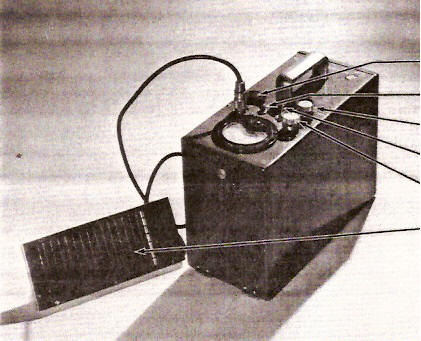
Pee Wee (Nuclear Chicago, Model 2111) 1959
The Poppy, Model CLM-41, was developed at Argonne National Laboratory. It had a scale reading of 0-3000 and 0-30,000 cpm.
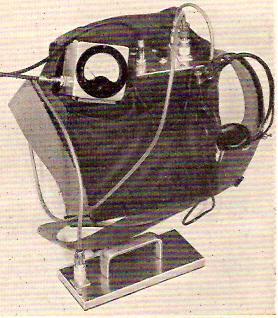
Poppy (Argonne National Laboratory, Model CLM-41) 1948
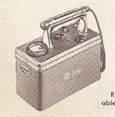
Nuclear Inst and Chemical Company Model 2610A 1950
Under a contract with the U.S. Navy, Anton Electronics Laboratory developed a compact portable instrument to measure up to 500 R/h. It has a six inch, 270 degree meter. It has a five decade logarithmic scale to display intensities from 0.005 to 500 R/h. The instrument is shaped like and inverted L and can be clipped onto your belt so that the top of the unit is easy to read.
The Radiacmeter IM-71/PD was developed by the Signal Corps Engineering Laboratories in 1953. The unit is small gamma measuring instrument with an ionization chamber. It has a molded plastic case in the shape of an L. Each leg measures 4.5 with an overall width of 3.5. The unit weighs 1 lb.
Need photo
Radiacmeter IM-71/PD 1953
The Model NRDL RB-110 was an experimental model field decontamination instrument in 1953. It was designed as a directional indictor for beta radiation. It has two ion chambers one above the other. The lower window has a thin window and will detect both beta and gamma. The back chamber only detects gammas. By balancing the gamma current, the beta could be measured. It used a single 1.5 volt battery. The unit measures 6 x 6 x 6 and weighs 3 lbs.
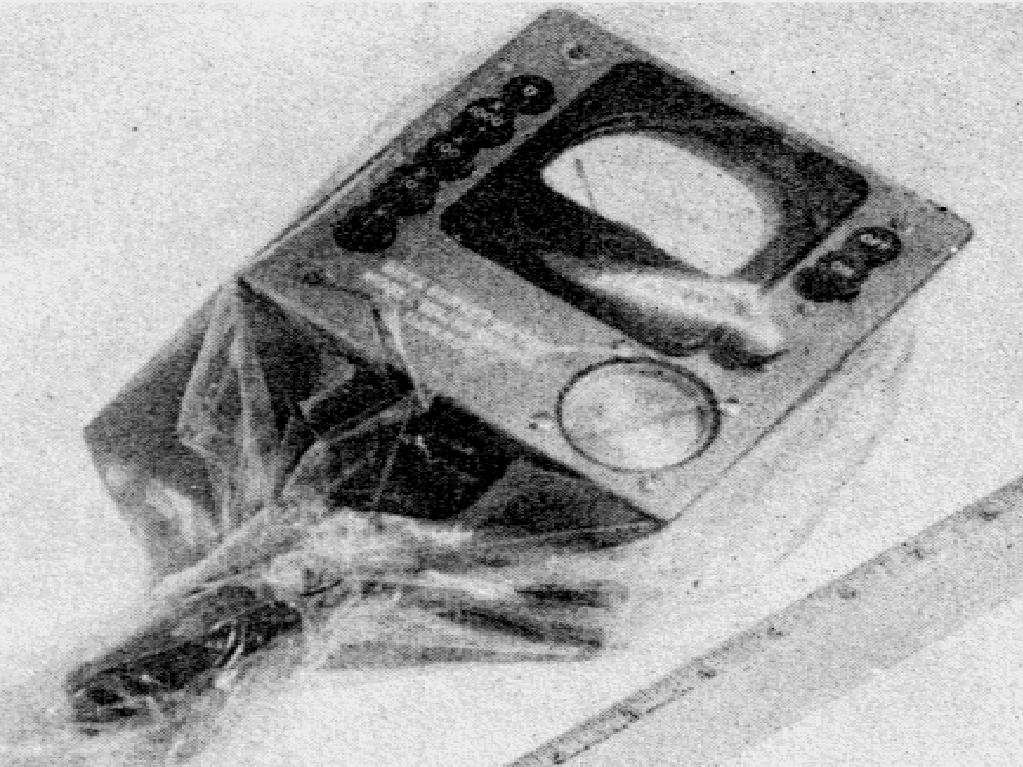
NRDL RB-110 1953
The Model NRDL RG-1-10 was a high efficiency ion chamber radiac set in 1953. It has five ranges from 0-500 R/h. It has a 3.5 cu in lead lined, argon filled ionization chamber. The unit measures 5 x 5 x 4 and weighs 2.5 lbs.
Need photo
NRDL RG-1-10 1953
The Model NRDL High-R Radiac Set. It has five ranges from 0-500 R/h. It used a scintillaion crystal. The unit measures 6 x 3 x 5 and weighs 4 lbs.
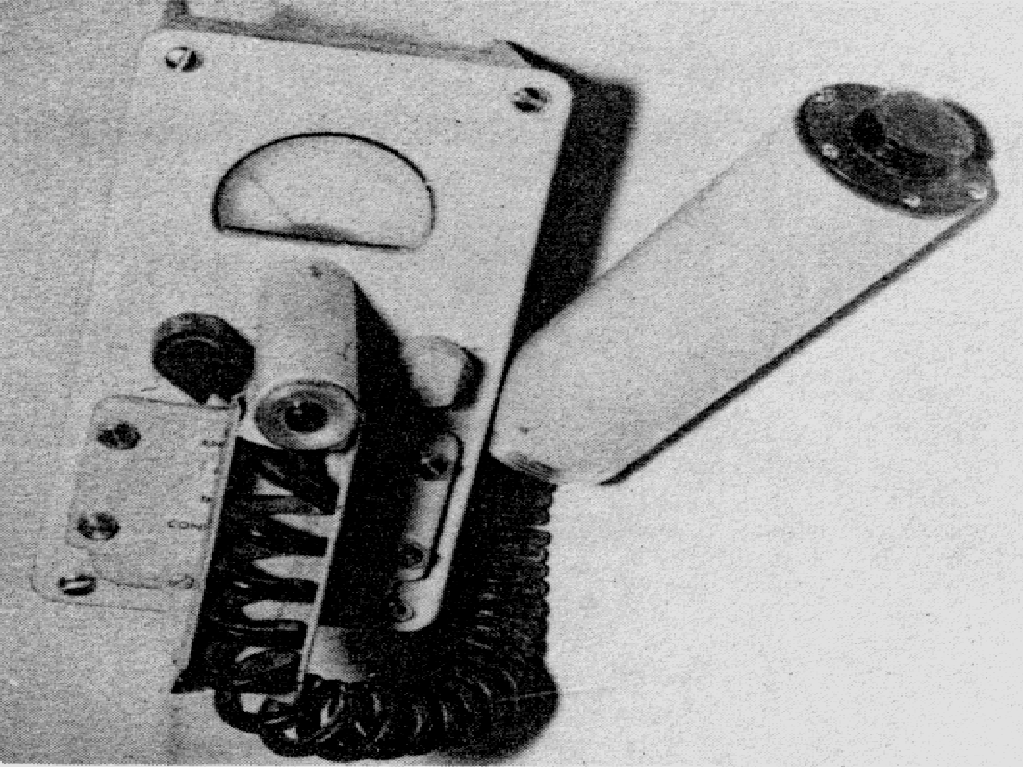
NRDL High-R Radiac Set 1953
The Mark V Model I beta-contamination monitor was introduced in 1953. It was a portable instrument for measuring localized radioactivity in regions of fission-production contamination. The contamination can be determined from the beta-gamma ratio. It has a gas flow detector using a mixture of argon and carbon dioxide.
Need photo
NRDL Mark V Model I 1953
The Model RAS-10 was developed by the U.S. Naval Radiological Defense Laboratory. It is an alpha detector with a photomultiplier tube with an aluminum-covered zinc-sulphide detector. It has series of slots with total area of 17 cm2 exposed for the 60 cm2 probe area. It has an range of 2 x 106 disintegrations per minute per 17 cm2.
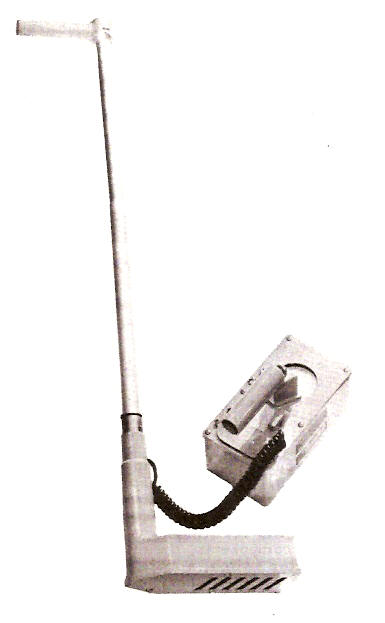
NRDL RAS-10 Alpha Radiac 1959
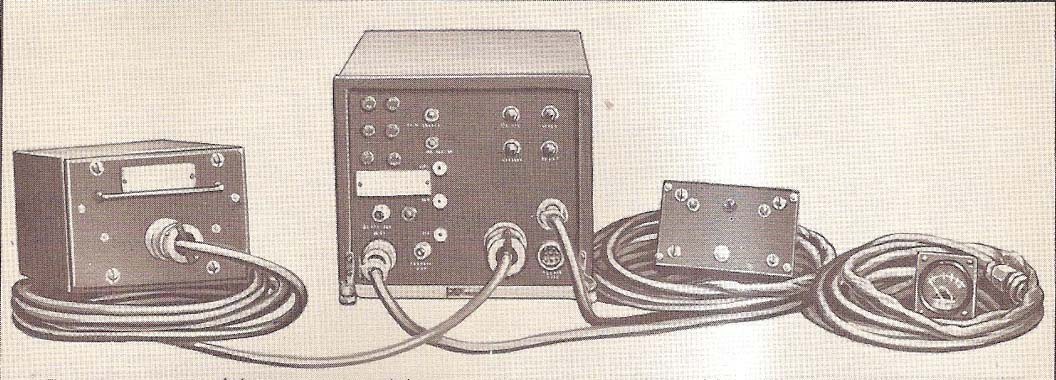
AN/ADR-1 (XN-2) Airborne Radiation Detection System with detector (left), power supply/amplifier (left center), control console (right center) and panel meter (right) 1951
Schematic Diagrams and Labeling for Several Radiac Instruments
The following section provides several schematic diagrams of a variety of portable radiation detectors used by the military.
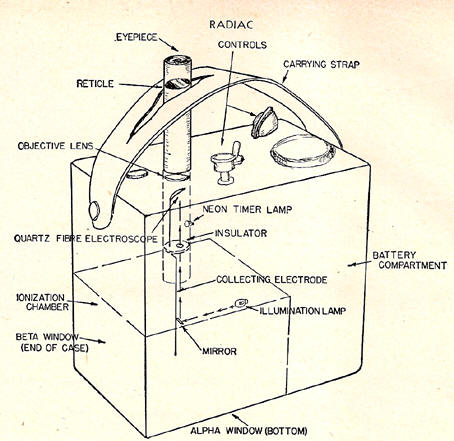
IM-7A/PD 1949
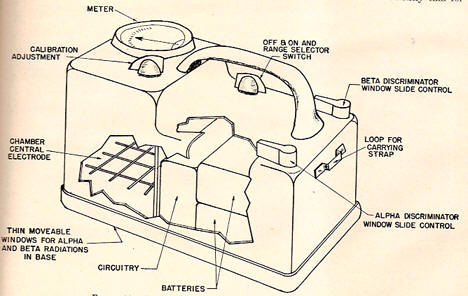
AN/PDR-20 1949
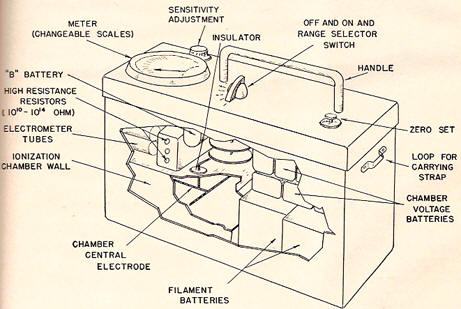
AN/PDR-6 Type 1949
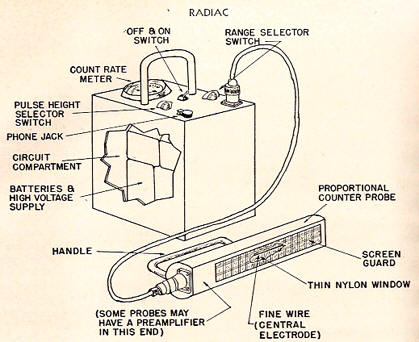
AN/PDR-10 Type 1949
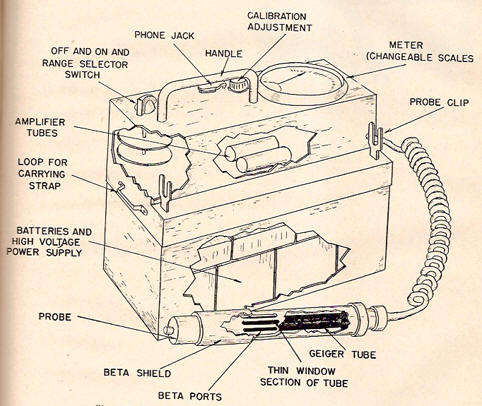
Im-30/PD Type 1949
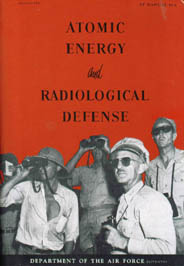
Atomic Energy and Radiological Defense 1951
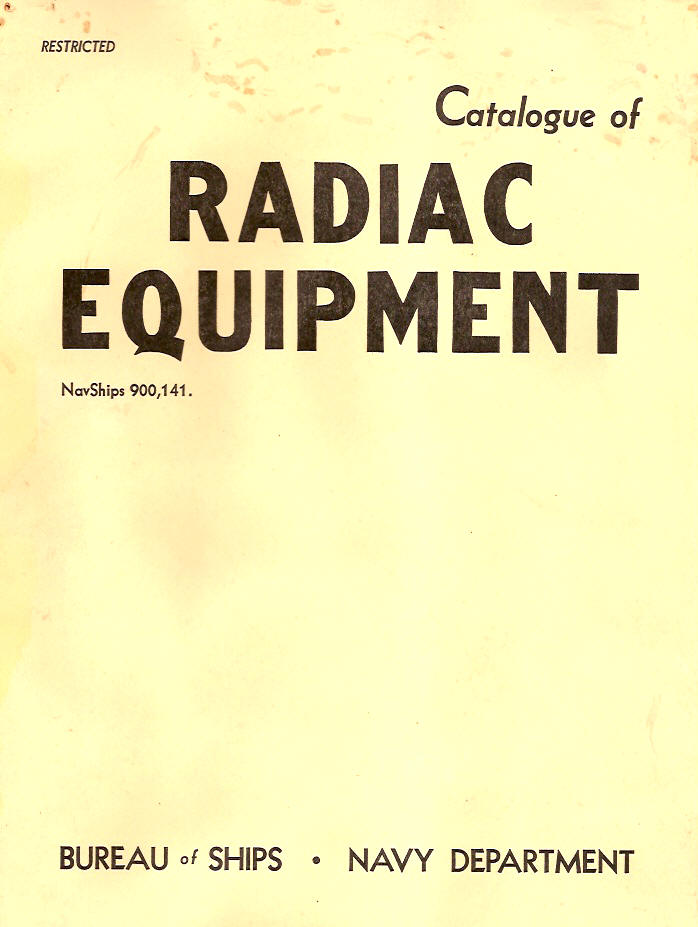
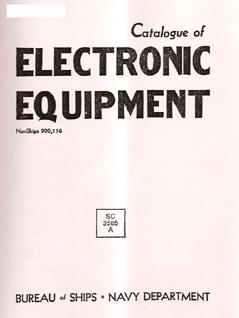
Catalog of Radiac Equipment NavShips 900,141 (1948) and Catalog of Electronic Equipment NavShip 900,116 (1952)
Below are the Radiac instrument contents of the catalogs from the 1948 version
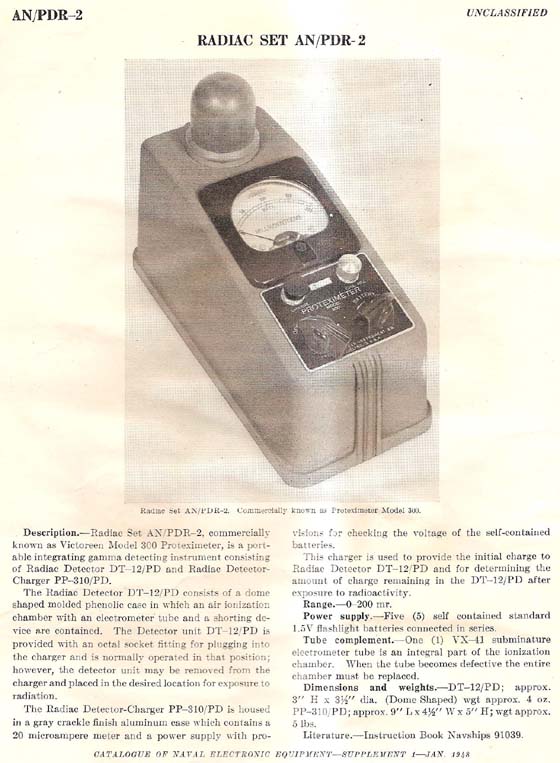
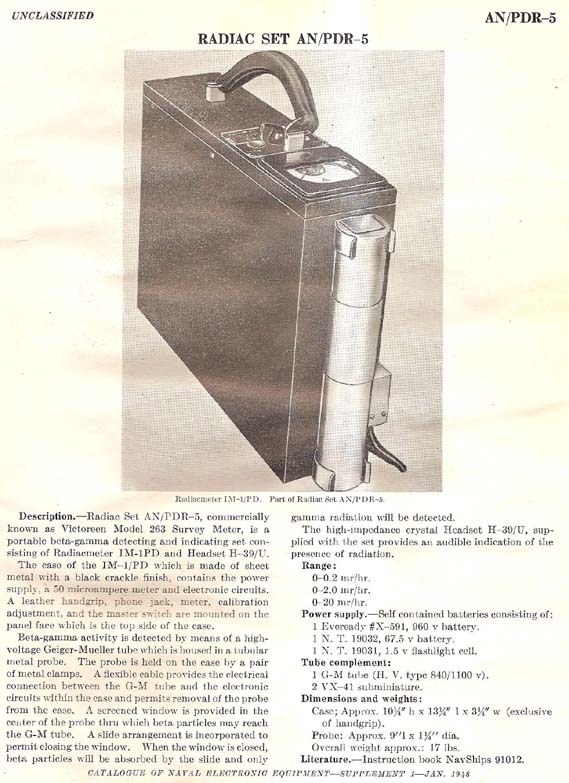
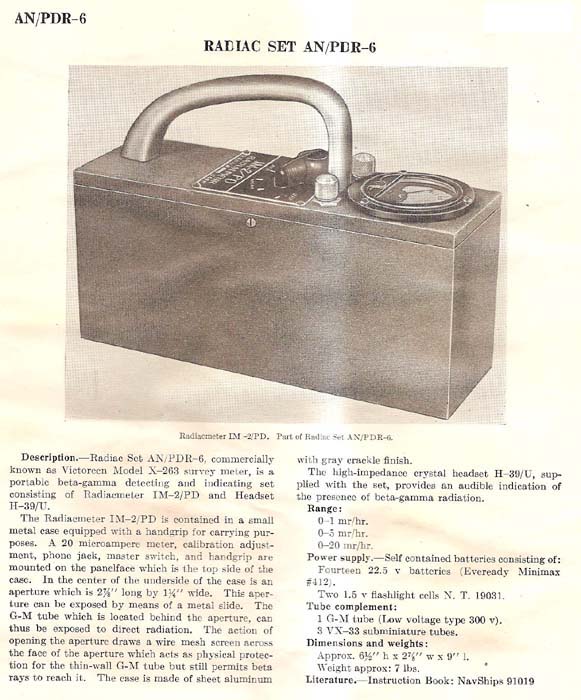
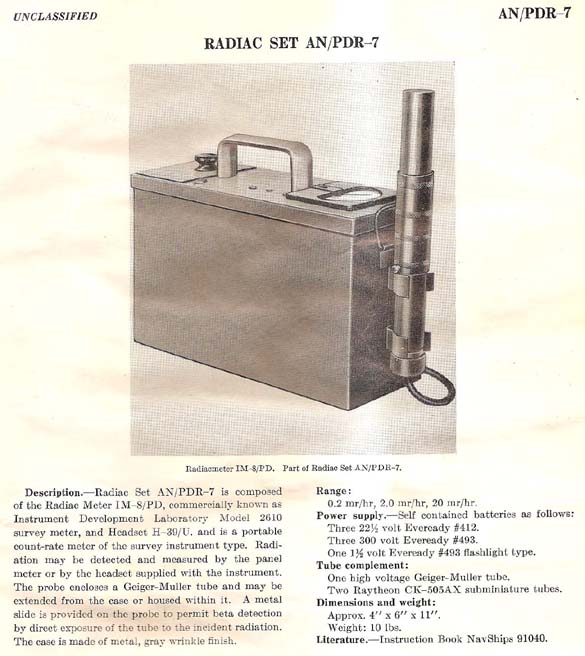
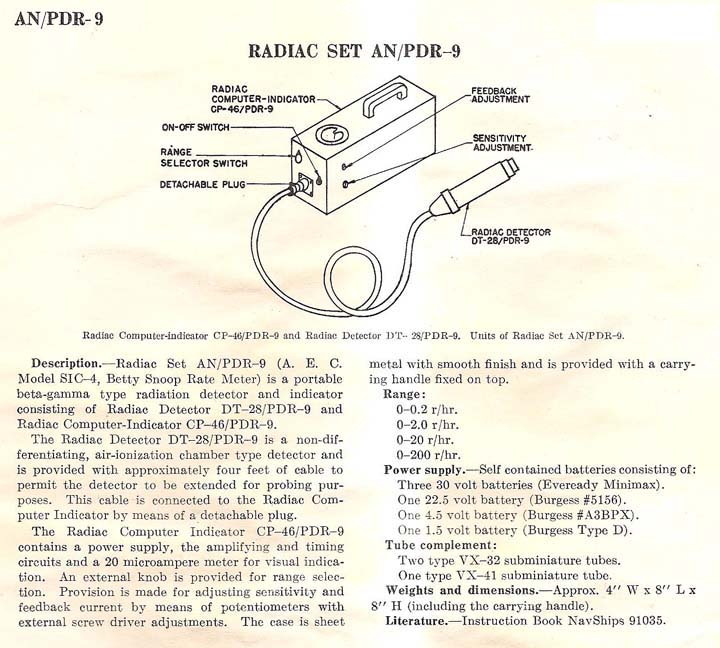
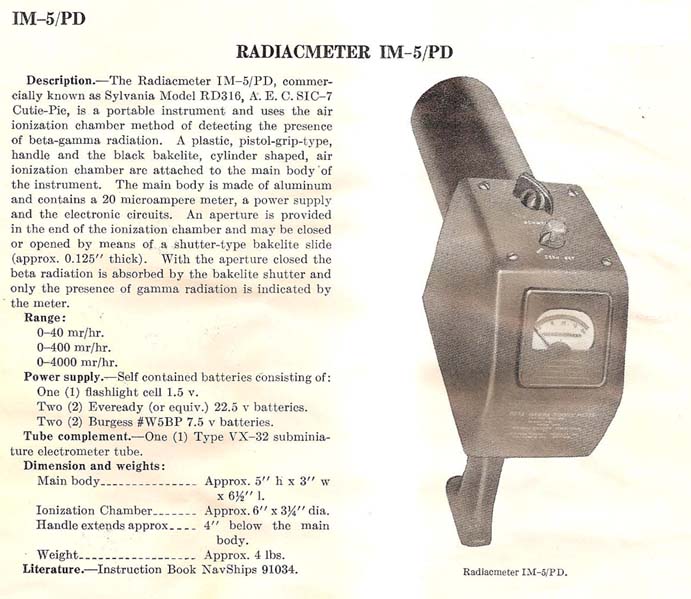
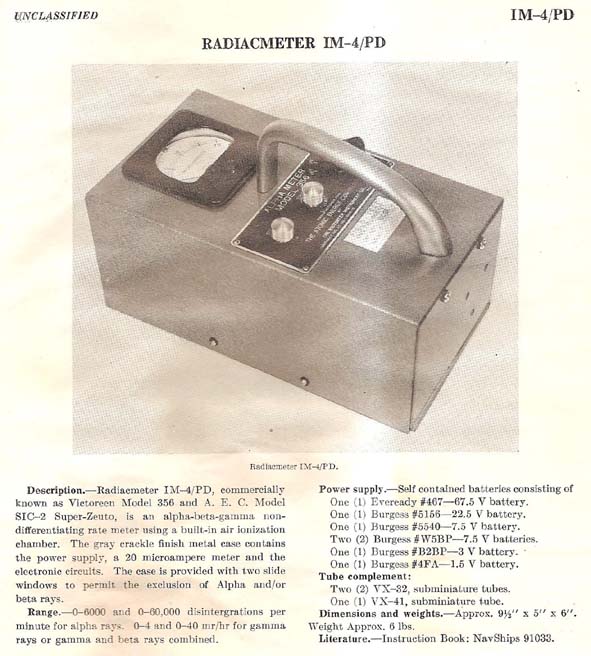

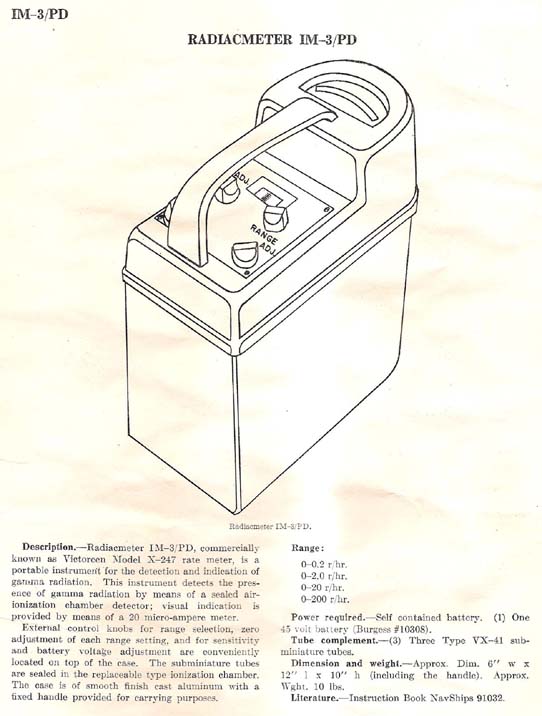
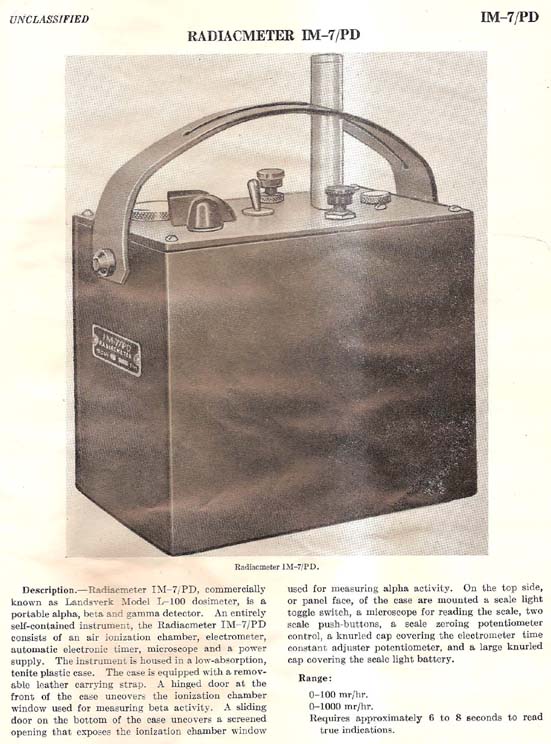
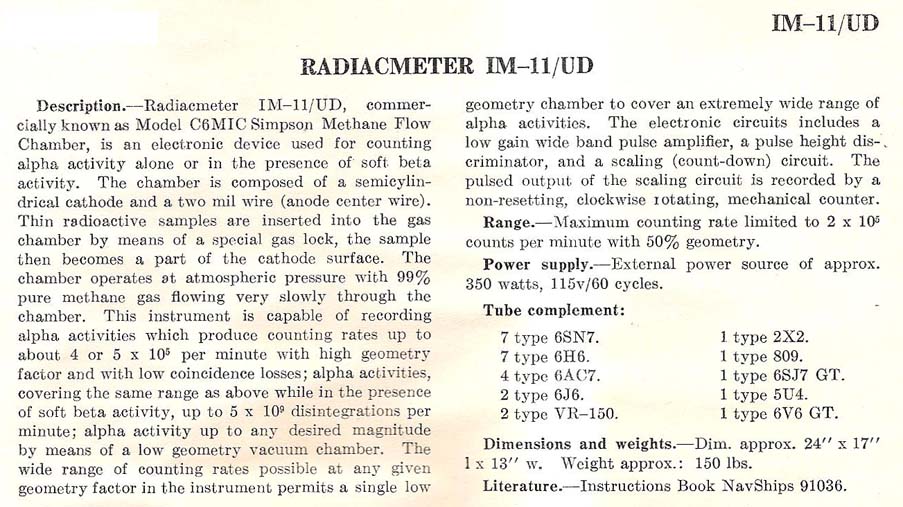
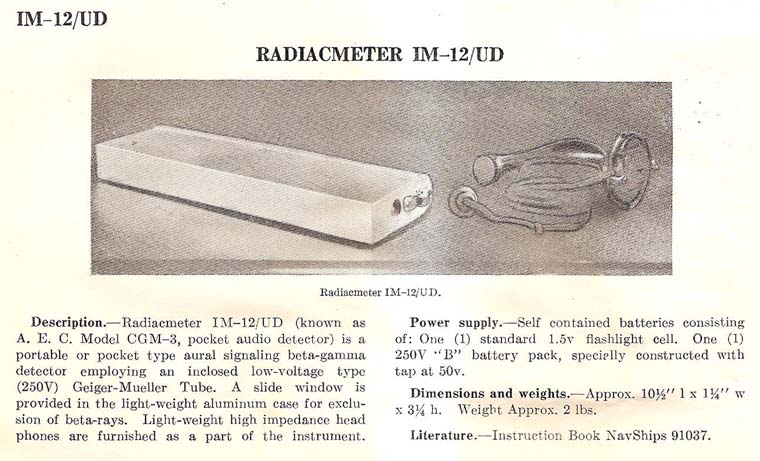
NAVSHIPS Instruction Manuals for Radiac Instruments 1950's
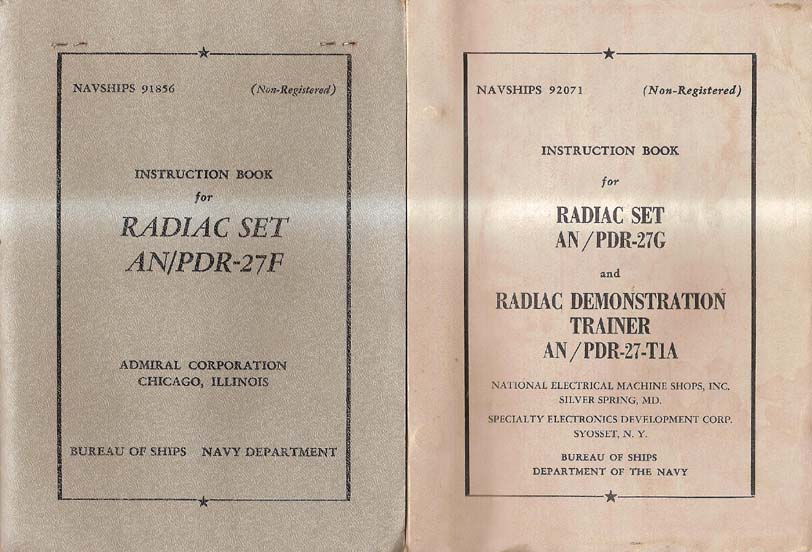
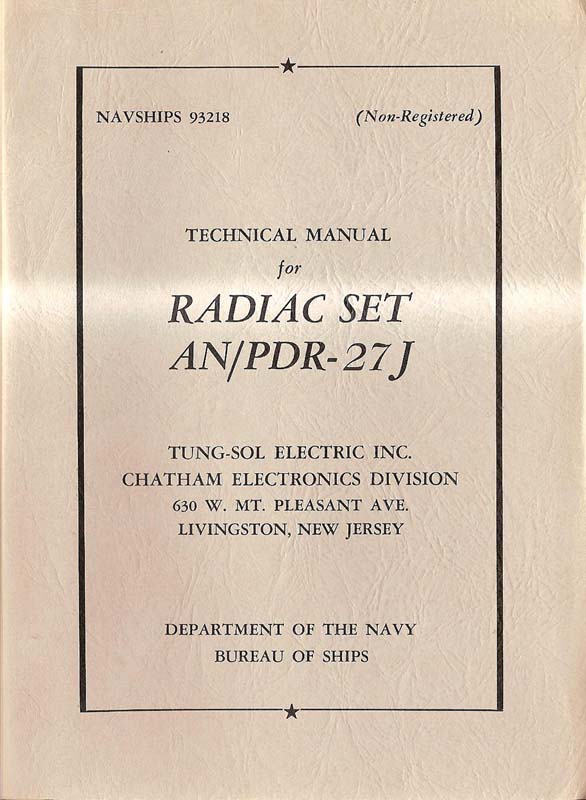
Military Photographs of Soldiers using Radiation Detectors
The following section provides a few photographs from the 1940's-1950's with military soldiers using radiation detection equipment in exercises.
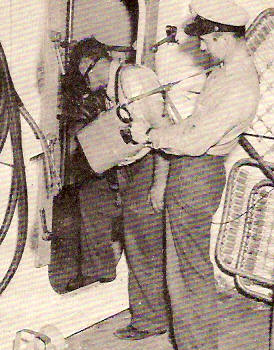
Dose measurement before entering a compartment on a ship 1950's
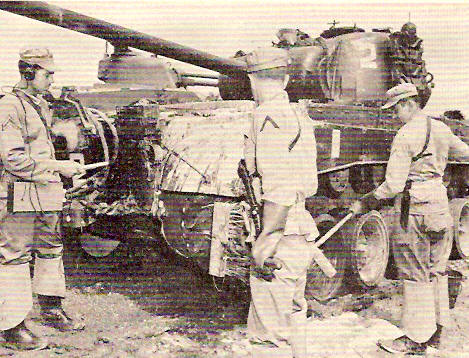
Contamination measurement with a portable GM detector after decontaminating a tank 1950's
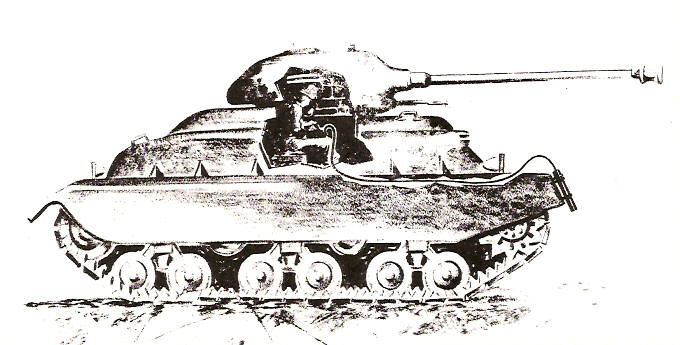
Tank providing shielding with probe on front to measure exposure rate levels 1950's
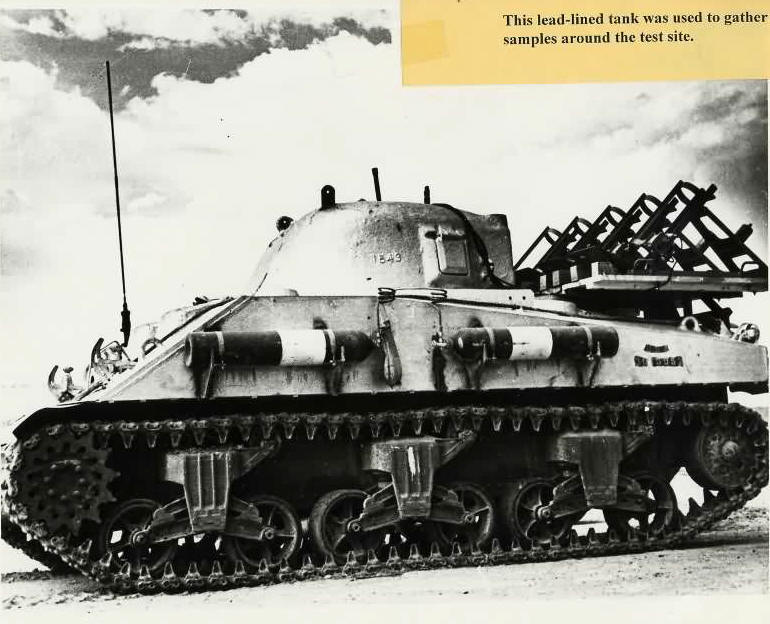
Trinity lead-lined tank used to gather samples around the test site 1940's
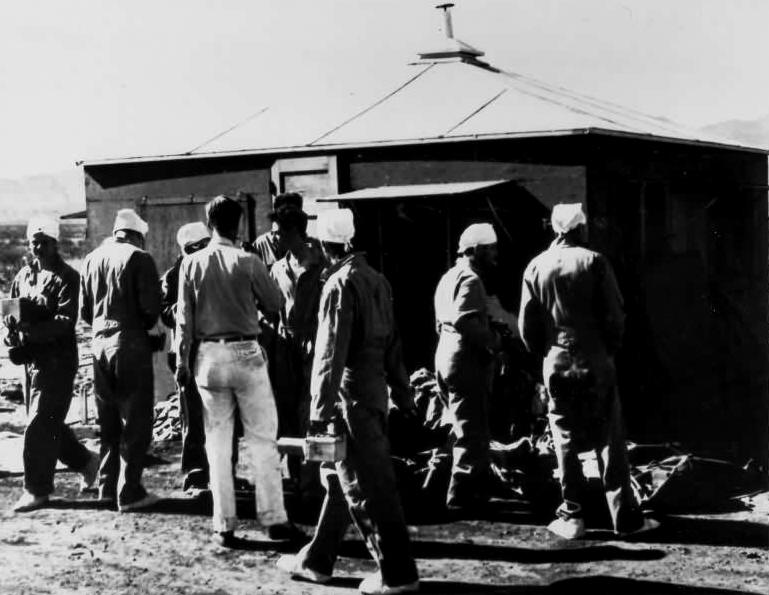
Trinity test site with workers holding instruments 1940's
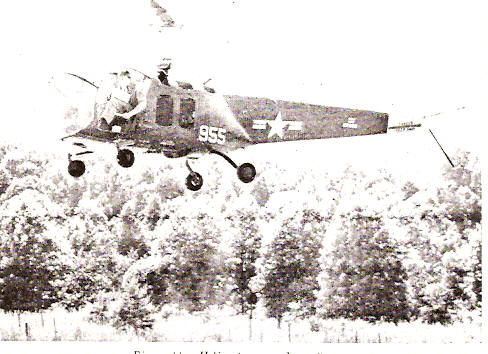
Helicopter with RADIAC to probe for ground contamination 1950's
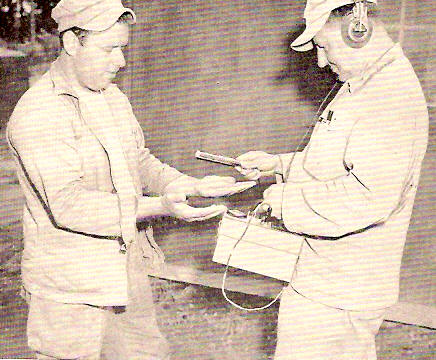
Hand survey for contamination 1950's
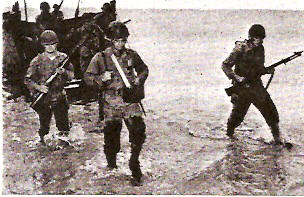
Beach survey training with ionization chambers in preparation for WW II Operation Peppermint 1940's
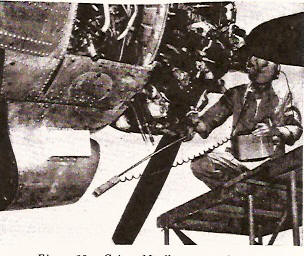
An airplane survey with a AN/PDR-8 long probe meter 1950's
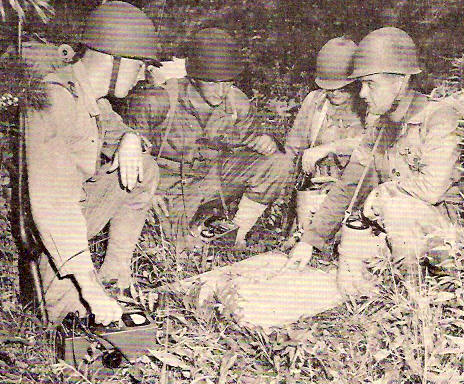
Radiac instruments were evaluated in a variety of missions 1950's
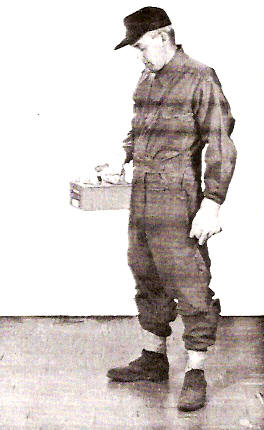
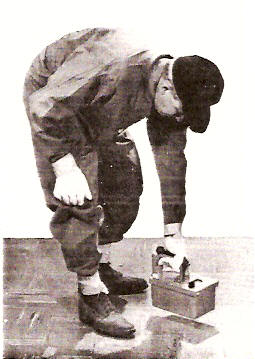
Measurements at 3 feet and at the ground surface 1950's
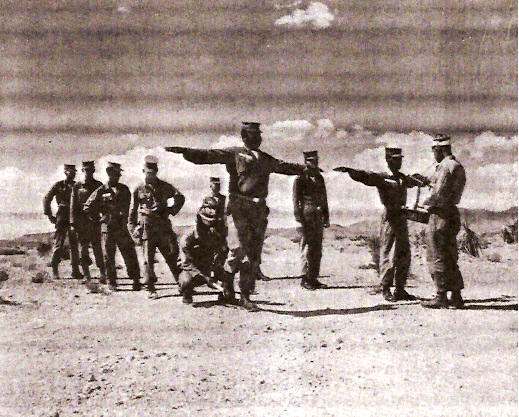
Surveying personnel at a decontamination line 1950's
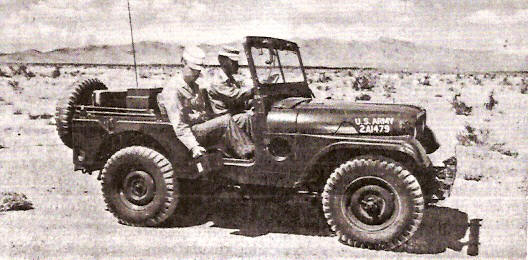
Radiation measurement from a jeep 1950's
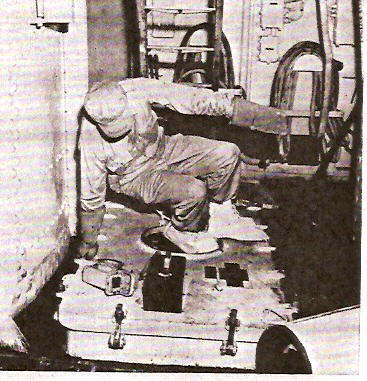
Surveying a passage way on a ship 1950's
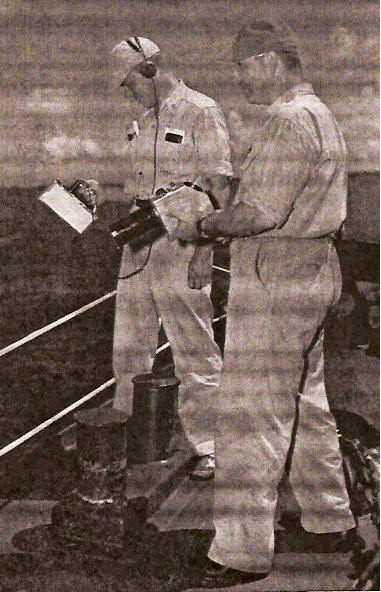
Radiation monitors at Bikini Atoll after atomic tests 1956
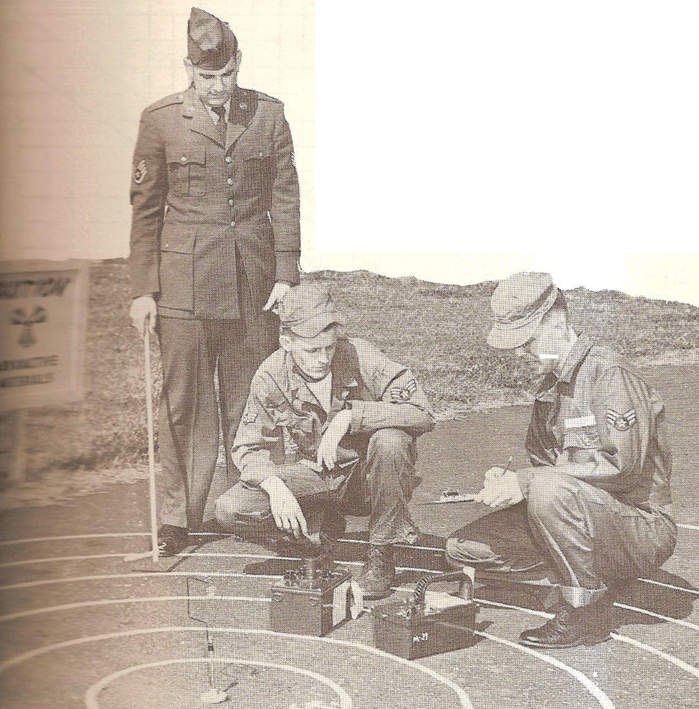
Calibration Slab from A Review of Passive Defense Manual, Air Force, July 1954
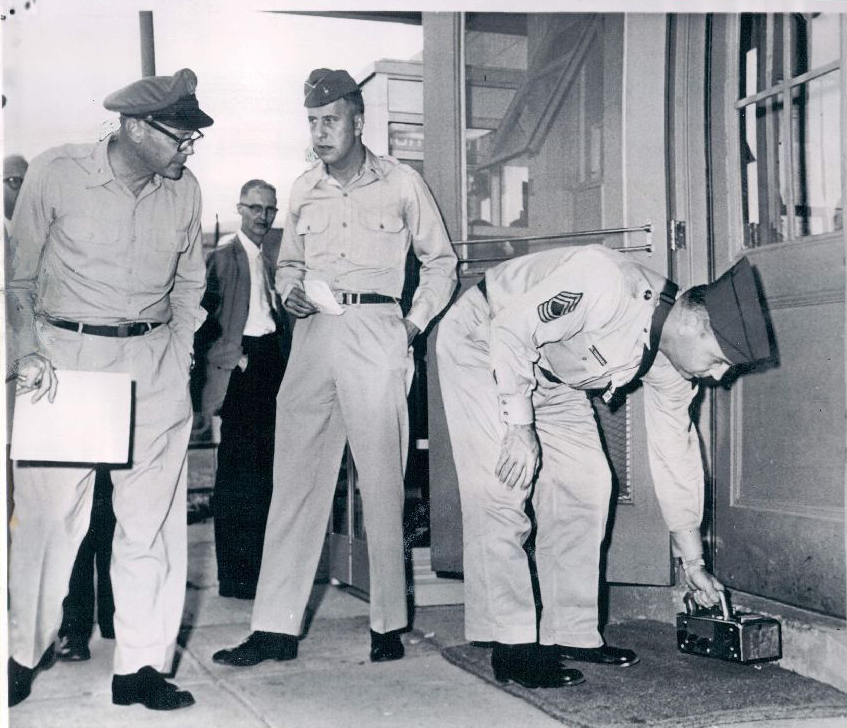
Mine Detection Using Radioactive Markers
IN 1946, Vannevar Bush, Director of the Office of Scientific Research and Development, and National Defense Research Committee, published a reported titled "Detection of Land Mines and Sound Ranging" to determine best approach for detecting non-metallic mines and also for marking friendly mines. It was thought that the Germans might mark their underground anti-tank mines with a radioactive material, i.e. Co-60. The U.S. needed a tool to locate the remaining mines after WW II. The U.S. military embarked on a program to procure or develop sensitive radiation detectors. They turned to the Texas Company's Geophysical Laboratory in Houston, Texas and the Massachusetts Institute of Technology. The unit was the AN/PRS-2 or Mamie. Project Mamie is the code name for marking friendly mines with radioactive materials. Project Dinah was the code name for the whole non-metallic mine detector program, of which radiation detection was part. Small buttons of radioactive material are planted on top of or adjacent to the buried mine. The marking scheme was developed independently by the U.S. and Germans. The Germans were marking their Topf mines and had developed the Stuttgart 43 instrument for detection. The AN/PRS-2 consisted of three parts - a head which contained the Geiger counter, a amplifier and power supply box, and a set of earphones. The company did not want to disclose the type of detector because it had been developed under a previous contract. The detector was cylindrical in shape and measured 2" diameter by 4" long. The signal was audible via a tone where the intensity indicated increasing source strength. It was sensitive to 2 micrograms equivalents of radium buried 2 to 3 inches in the ground. The AN/PRS-1 measured the seismic (earth current) signature between mines and other buried objects and AN/PRS-3 was a metallic mine detector.
The Massachusetts Institute of Technology produced the markers. The markers were a Co-60 chloride solution in small glass ampoules each containing 2.5 microcuries (1 microcurie of Co-60 is equal to 2 micrograms of "radium x-ray equivalents"). In addition, markers were made in the form of artificial rocks containing activated cobalt. The rocks were "spheres of porous ceramic material saturated with aqueous solution of cobalt nitrate". Co-60 was preferred as it did not emit alphas like radium and was not similar in chemistry to calcium.
They also investigated techniques to detect non-metallic mines using radiation. The investigated scattering of gamma rays, scattering of neutrons, prompt gamma rays fro neutron bombardment (using a mixture of radium salt and beryllium) and delayed gamma rays from neutron bombardment. None of these techniques proved effective for the field environment. The technique of bombarding the ground with neutrons and detecting the emitted radiation as well as bombarding the ground with x-rays and measuring the emitted radiation were also studied requiring a portable detector.
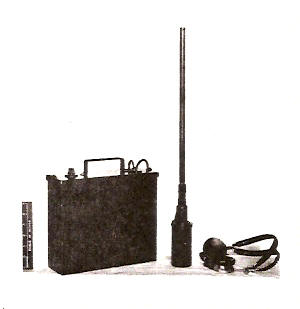
AN/PRS-2 "Mamie" Detector 1946
Radiation Instrumentation Collection
Collage of radiation detection instruments used over the 1940's-1950's by the U.S. military. Pictures from the Radiological Defense ConAC Manual 50-11, Volume 1, Part 6, November 1951.
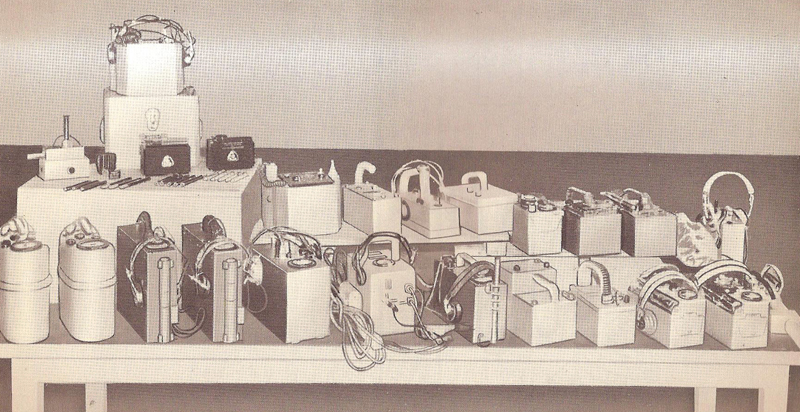
Collection of Commercial and Military Radiation Instruments of Interest to the Defense Establishment 1951

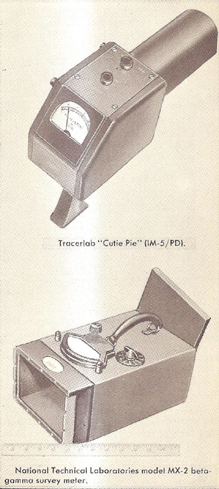
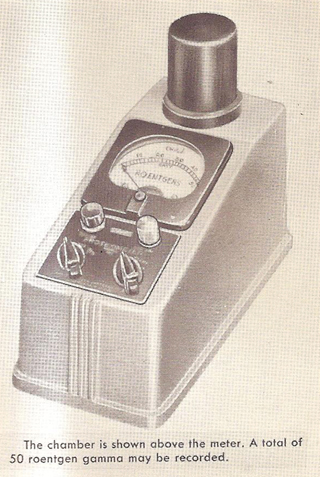
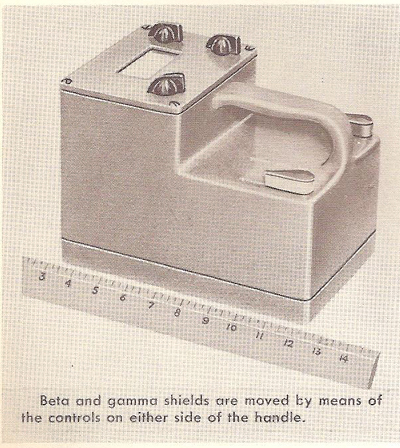
Gamma Survey Meters Beta-Gamma Survey Meters Victoreen High Range Proteximeter AN/PDR-20 (XN-1) Experimental Zeus
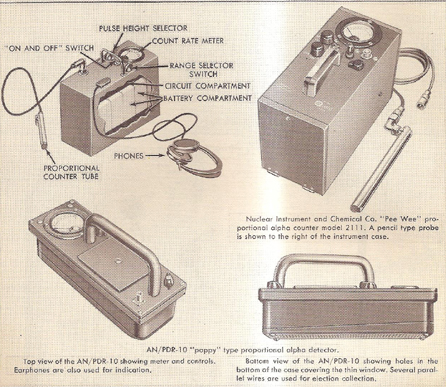
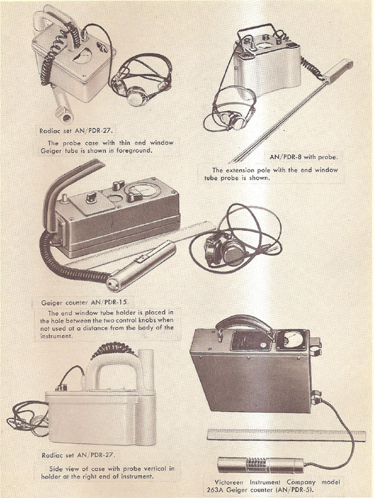
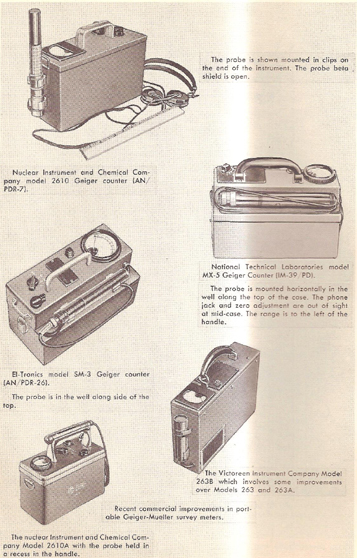
Collection of Pictures from the Radiological Defense Manual 1951
The following four tables show the AN/PDR designations and a brief description of the radiation detection instrument to include name, purpose, manufacturer, range, shape and weight.
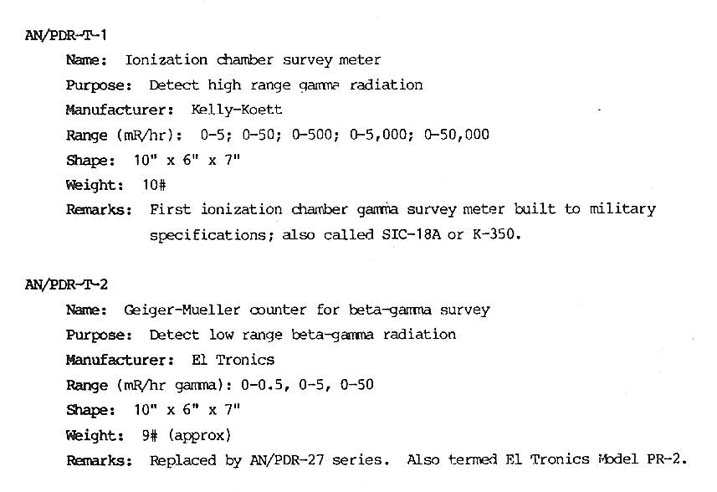
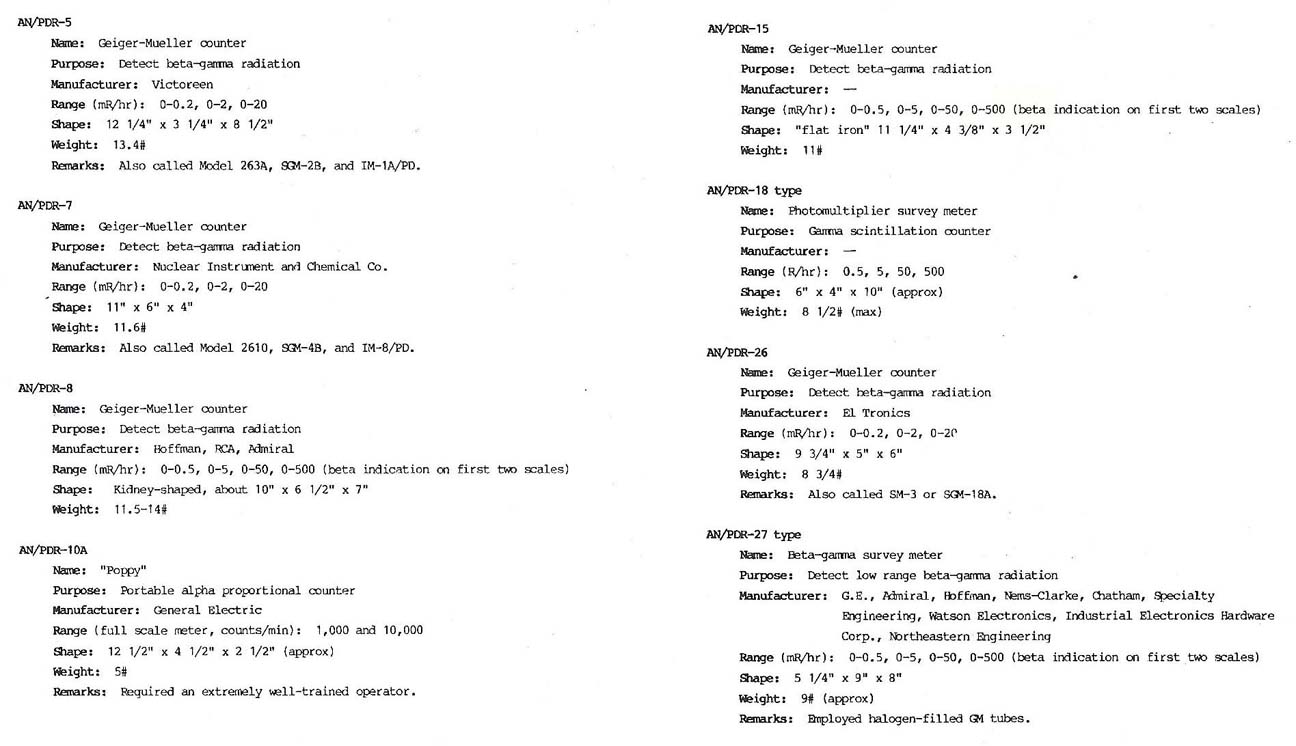
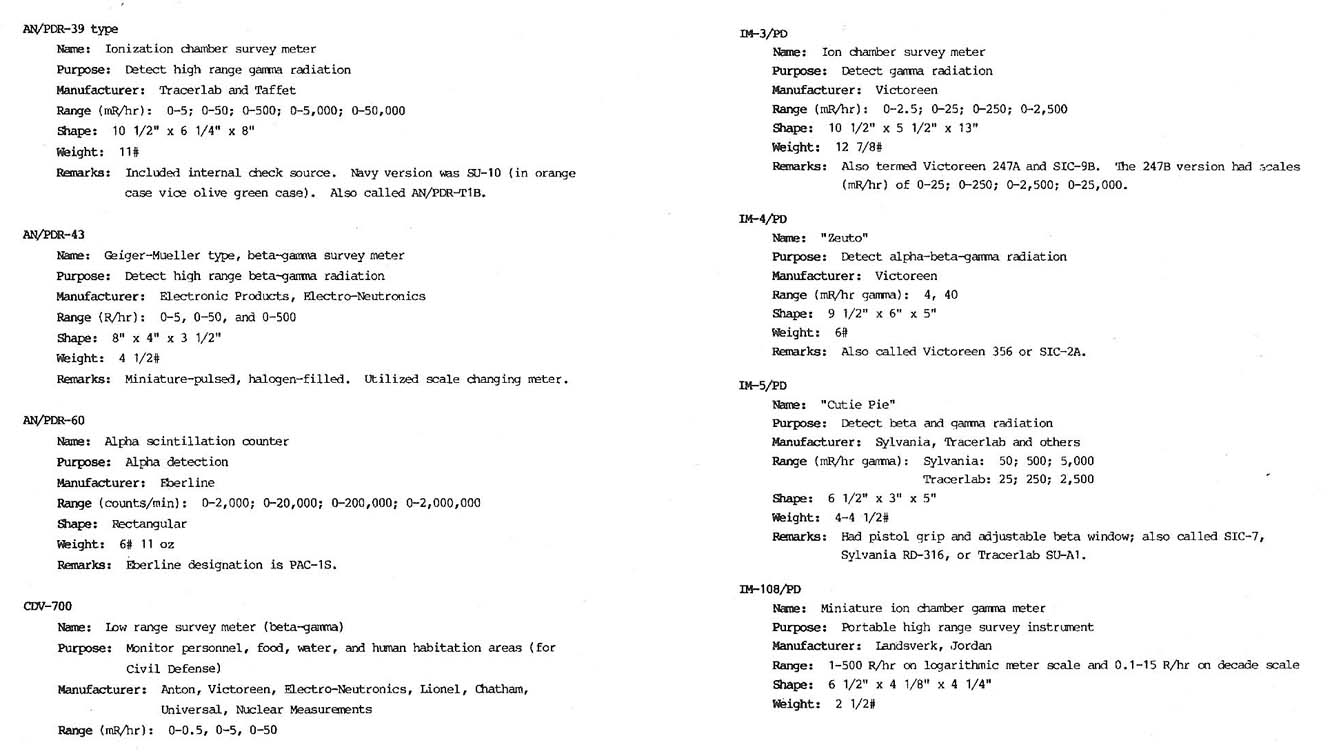
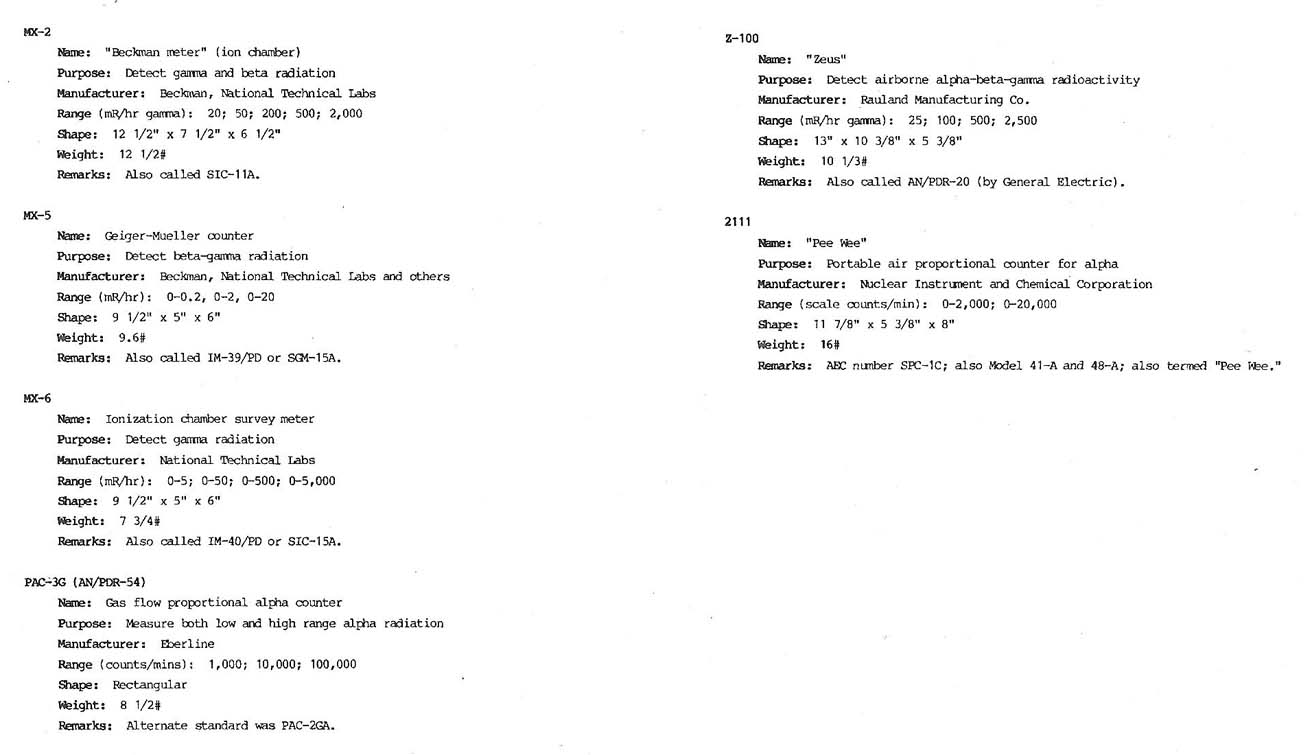
Joint Electronics Type Designation System (The "AN" System)
During WWII, the growth of electronic equipment required the establishment of a nomenclature to designate the Army and Navy systems. The Army and Navy introduced the new "Joint Army-Navy Nomenclature System", also known as "Joint Communications-Electronics Nomenclature System", or short as "AN System". This was formally approved on 17 February 1943, although the first designation assignments were already made in late December 1942.
The prefix of "AN/" stood for "Army-Navy".
Radiac instruments used the following code system:
AN/PDR-# where after the / the - Letter 1 "P" is for Portable (by man), Letter 2 "D" is for Radiac (Radioactivity Detection, Identification, and Computation), and Letter 3 "R" is for Receiving or Passive Detecting. A pParentheses Indicator such as AN/PDR-27 ( ) refers to all models of equipment current when the manual was prepared.
Letter (1) indicates the installation location of the equipment:
A - Piloted Aircraft
B - Underwater, Mobile (submarine)
C - Cryptographic Equipment
(C - Air Transportable; this installation indicator has been removed from the system)
D - Pilotless Carrier (missile, drone, UAV)
F - Ground, Fixed
G - Ground, General (multiple types of ground installation)
K - Amphibious
M - Ground, Mobile
P - Portable (by man)
S - Surface Ship
T - Ground, Transportable
U - General Utility or Combination
V - Ground, Vehicle
W - Water Surface/Underwater Combination
Z - Piloted/Pilotless Airborne Combination
Letter (2) is the type of the equipment:
A - Invisible Light, Heat Radiation (i.e. infrared)
B - Comsec (secure communications)
(B - Pigeon ; this type indicator has been removed from the system)
C - Carrier (electronic wave or signal)
D - Radiac (Radioactivity Detection, Identification, and Computation)
E - Laser
(E - NUPAC (Nuclear Protection & Control); this type indicator has been removed from the system)
F - Fiber Optics
(F - Photographic; this type indicator has been removed from the system)
G - Telegraph or Teletype
I - Interphone and Public Address
J - Electromechanical
K - Telemetering
L - Countermeasures
M - Meteorological
N - Sound in Air
P - Radar
Q - Sonar and Underwater Sound
R - Radio
S - Special or Combination
T - Telephone (Wire)
V - Visual, Visible Light
W - Armament (only used, if no other letter applies)
X - Fax or Television
Y - Data Processing
Z - Communications
Letter (3) defines the purpose of the equipment:
A - Auxiliary Assembly
B - Bombing
C - Communications
D - Direction Finding, Reconnaissance and Surveillance
E - Ejection and/or Release
G - Fire Control or Searchlight Directing
H - Recording and/or Reproducing
K - Computing
(L - Searchlight Control; this purpose indicator has been removed from the system; purpose now covered by "G")
M - Maintenance or Test
N - Navigation Aid
(P - Reproducing; this purpose indicator has been removed from the system; purpose now covered by "H")
Q - Special or Combination
R - Receiving or Passive Detecting
S - Detecting, Range and Bearing, Search
T - Transmitting
W - Automatic Flight or Remote Control
X - Identification or Recognition
Y - Surveillance (target detecting and tracking) and Control (fire control and/or air control)
Z - Secure
Major Unit Type Numbers
Example is IM-108/PD which is a portable tactical instrument for measuring radioactive fallout.
Component Indicator and Family Name
IM - intensity measuring devices
Number - item within equipment family
Set or Equipment Indicator
PD - Pack or portable (man or animal) Radiac
A-N Nomenclature List
The following section provides the A-N Nomenclatures List for radiation detection instrumentation from Radiological Defense, Vol. IV, A Manual Prepared by the Armed Forces Special Weapons Project, 1948.
